Forums
- Forums
- Axis And Allies Forum
- General Discussion
- Aviation News
Aviation News
Post a reply
- Go to Previous topic
- Go to Next topic
- Go to Welcome
- Go to Introduce Yourself
- Go to General Discussion
- Go to Screenshots, Images and Videos
- Go to Off topic
- Go to Works in Progress
- Go to Skinning Tips / Tutorials
- Go to Skin Requests
- Go to IJAAF Library
- Go to Luftwaffe Library
- Go to RAF Library
- Go to USAAF / USN Library
- Go to Misc Library
- Go to The Ops Room
- Go to Made in Germany
- Go to Campaigns and Missions
- Go to Works in Progress
- Go to Juri's Air-Raid Shelter
- Go to Campaigns and Missions
- Go to Works in Progress
- Go to Skinpacks
- Go to External Projects Discussion
- Go to Books & Resources
-
 Main AdminThe pilot of an AH-64 Apache helicopter from the 12th Combat Aviation Brigade lands after conducting a rehearsal of the combined arms live fire exercise for Saber Strike 16 at the Estonian Defense Forces central training area near Tapa, Estonia on June 19, 2016. Saber Strike is a long-standing U.S. Army Europe-led cooperative training exercise designed to improve joint interoperability through a range of missions that prepare the 14 participating nations to support multinational contingency operations.
Main AdminThe pilot of an AH-64 Apache helicopter from the 12th Combat Aviation Brigade lands after conducting a rehearsal of the combined arms live fire exercise for Saber Strike 16 at the Estonian Defense Forces central training area near Tapa, Estonia on June 19, 2016. Saber Strike is a long-standing U.S. Army Europe-led cooperative training exercise designed to improve joint interoperability through a range of missions that prepare the 14 participating nations to support multinational contingency operations.
(Minnesota National Guard by Tech. Sgt. Amy M. Lovgren/ Released)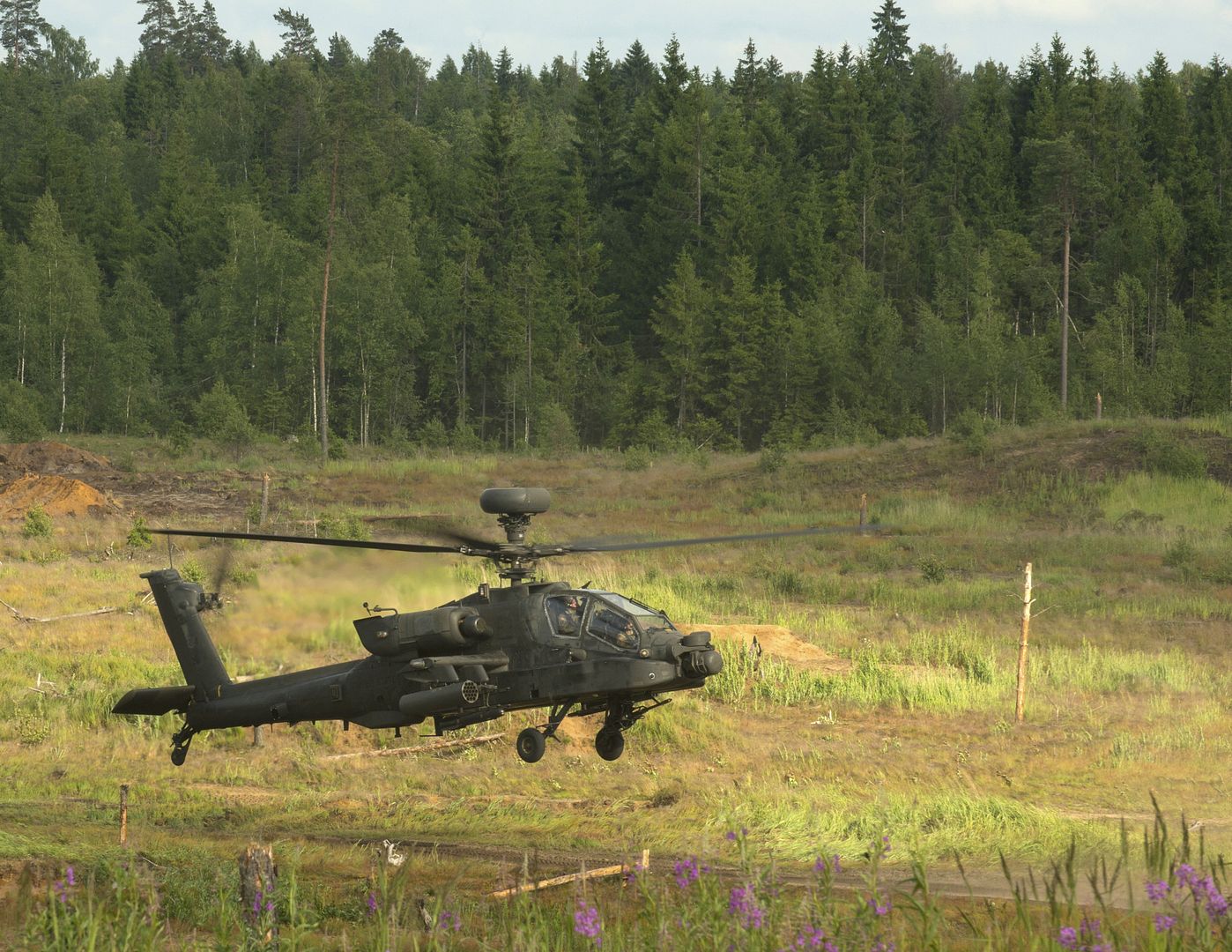
ANDERSON AIR FORCE BASE, Guam ? An MH-60S from Helicopter Sea Combat Squadron 25, assigned to Andersen Air Force Base, Guam, assisted in the recovery of two persons in distress 13 miles northwest of the Northern Mariana island of Tinian, June 18.
The MH-60S Knighthawk was able to locate and relay the position of the distressed personnel to the U.S. Coast Guard Sector Guam command center, which was able to coordinate with the Fire Division of the Commonwealth of the Northern Mariana Islands (CNMI) Department of Public Safety (DPS) to recover the personnel.
?It means a great deal to be able to help save life. You can?t put into words the feeling of helping two people make sure they get ashore safely and see their families,? said Lt. Amanda Lowery, aircraft commander of the HSC-25 aircraft that responded to the search and rescue. ?A lot of credit goes to Coast Guard Sector Guam who were able to give us the search data to locate the vessel in distress.?
The HSC-25 aircraft was launched at 9:35 p.m. local on June 18 in response to an emergency call received by the U.S. Coast Guard Sector Guam over the Coast Guard's Rescue 21 communications system.
At 10:19 p.m., the HSC-25 aircraft arrived on scene of the last known position of the vessel and then commenced its first leg of search as directed by the U.S. Coast Guard Sector Guam.
At approximately 10:30 p.m., the HSC-25 aircraft spotted the capsized vessel and the two personnel. The aircraft marked the location by hovering overhead, and passed the information to Coast Guard Sector Guam.
Soon after passing the position, a rescue boat with the Fire Division based out of Saipan arrived and threw life rings to the personnel and the personnel swam to the rescue boat. The rescue boat safely recovered the personnel and brought them to Saipan.
The HSC-25 aircraft returned to Anderson Air Force Base after the personnel were safely on the rescue boat.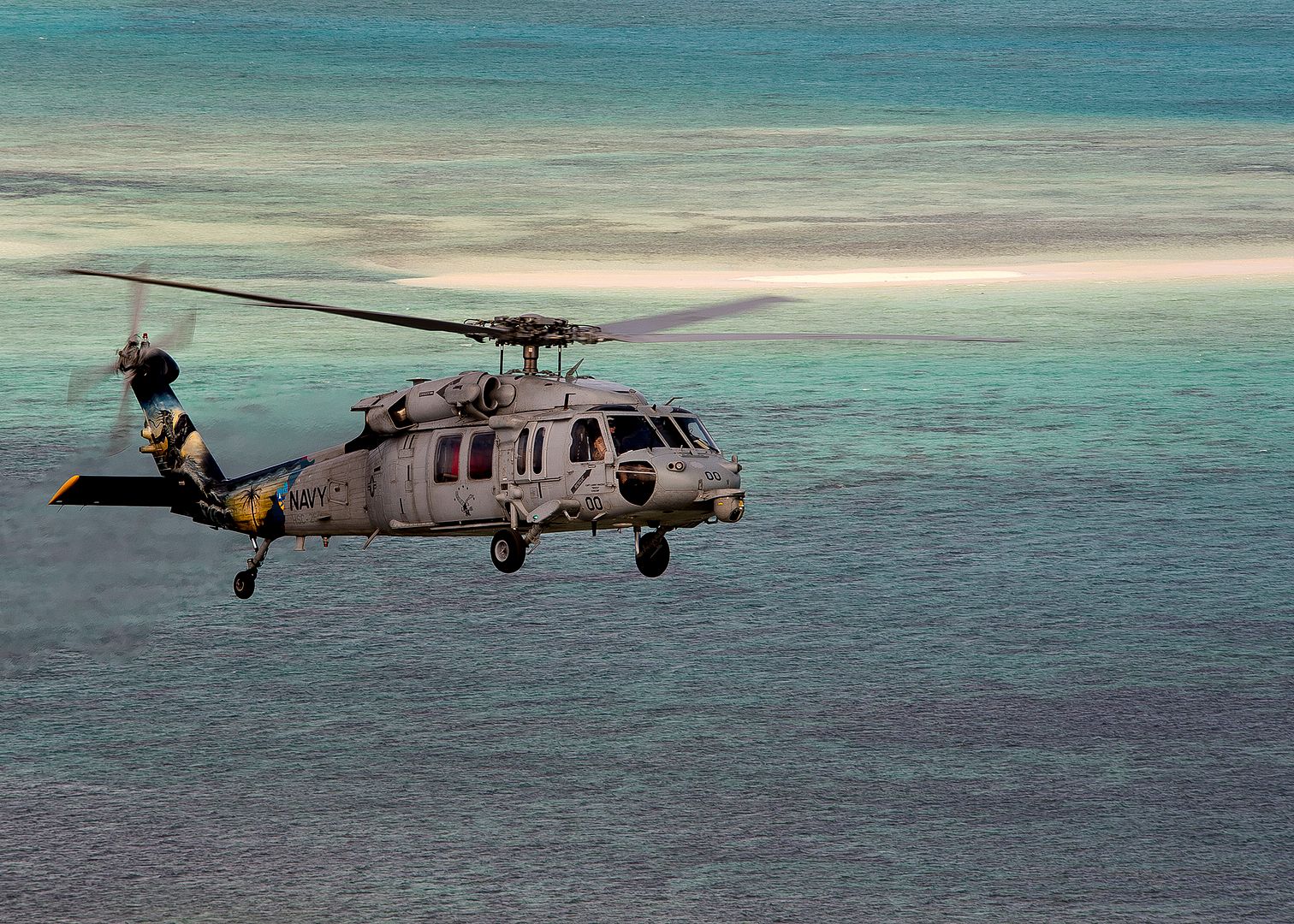
-
9 years ago
 Level 1FAA awards type certification for Piper M600 aircraft
Level 1FAA awards type certification for Piper M600 aircraft
US-based Piper Aircraft has now received type certification from the Federal Aviation Administration (FAA) for its new Piper M600 single-engine aircraft. Part of Piper's M-class line up, the M600 has six seats and is powered by a Pratt & Whitney PT6A-42A turbo prop engine. At maximum available power settings, the aircraft has a top speed of 507km/h and a maximum range of 2,748km at intermediate cruise settings.
Piper Aircraft chief operating officer James Funk said: "This achievement of type certification for the M600 was the result of the collaborative effort between the FAA and the team at Piper Aircraft. "Both teams worked together to develop and test this exceptional product, which we can now bring to market."
The M600 features general aviation avionics suite from Garmin and has improved safety features, including emergency descent mode, electronic stability protection, level mode and underspeed / overspeed protection. Garmin GTC 570 touchscreen controller equipped with M600 offers centralised point of access for the majority of all avionics tuning, selection and data inputs. Along with the FAA, Piper Aircraft had validated M600's performance, safety, function and reliability through a series of ground and flight tests.
The total flight hours amassed during development and certification were more than 1,850h using three flight test aircraft. M600 also has a maximum speed of 463km/h and can carry a maximum payload of 508kg.
Listed at a price of $2.853m, M600 was unveiled by Piper Aircraft last April. -
9 years ago
 Level 1Gogo and The Weather Company to improve aircraft turbulence safety
Level 1Gogo and The Weather Company to improve aircraft turbulence safety
US-based in-flight broadband internet provider Gogo Business Aviation has partnered with The Weather Company to help provide real-time turbulence reports and alerts directly to pilots, dispatch and other operations personnel.
With the aim of improving flight safety, the deal will see Gogo use The Weather Company's patented Turbulence Auto PIREP System (TAPS) turbulence detection algorithm on their aircraft-based communications server. The TAPS software will be deployed on Gogo's server, which provides access to the data generated by the aircraft to create reports of turbulence intensity.
Gogo said that its US-based air-to-ground and global satellite communication network is used to send the reports for instant action in flight operations and weather forecasting. Gogo Business Aviation connected aircraft services vice-president Andrew Kemmetmueller said: "In this increasingly connected world, it's no longer just about passenger connectivity, we have to consider all the other ways we can leverage the available technology to enhance the overall flight experience and improve safety such as a connected aircraft.
"Our ability to provide access to real-time data through our network will help pilots and operations teams improve flight planning, and ultimately, help airlines deliver the best in-flight customer experience throughout a flight." The company noted that each year, turbulence incidents cost airlines around $100m due to crew and passenger injuries, unscheduled maintenance, operational inefficiencies, as well as revenue lost while planes are out of service.
Studies have also revealed that aircraft encounters with turbulence are the main cause of non-fatal injuries in the commercial airline industry. In the conventional method, flight operators, pilots and aviation meteorologists received coded verbal reports with limited information on flight conditions, also known as PIREPS. Due to various reasons such as lack of cockpit data connectivity, pilots were unable to receive real-time updates.
With the Gogo network, pilots in the cockpit will now be able to access real-time turbulence reports and forecaster created alerts through The Weather Company's flight planning and operations applications, including WSI Fusion and WSI Pilotbrief, as well as aircraft communication displays.
-
 Main Admin20 June 2016
Main Admin20 June 2016
News articles by date
A Typhoon recently landed at Kinloss Barracks for the first time since the Moray base was handed over to the Army.
The landing, by a jet from 1(Fighter) Squadron, was part of an exercise to test response procedures of RAF personnel in the event of a Typhoon having to divert from RAF Lossiemouth.
Regular military flying operations ceased at Kinloss in 2011, but the airfield has remained a Relief Landing Ground (RLG) for aircraft since then.
Squadron Leader Rob Coffey is the Executive Officer within Operations Wing which is responsible for ensuring all flying operations from RAF Lossiemouth are co-ordinated and managed safely. He was pleased with the actions of all of the personnel involved in the exercise. He said:
?As we had not had to use Kinloss for a real Typhoon diversion since its inception as a Relief Landing Ground, we planned this exercise in order to practice our procedures and aircraft recovery actions.
?The exercise was an opportunity for the Fire Section in particular to practice their actions after the use of the Runway Hydraulic Arestor Gear, alongside ground engineering personnel, and also for dealing with an aircraft with hot brakes.
?All of our procedures worked well and the exercise provided excellent training for the RAF personnel based at Kinloss as well as the Typhoon crews at RAF Lossiemouth.?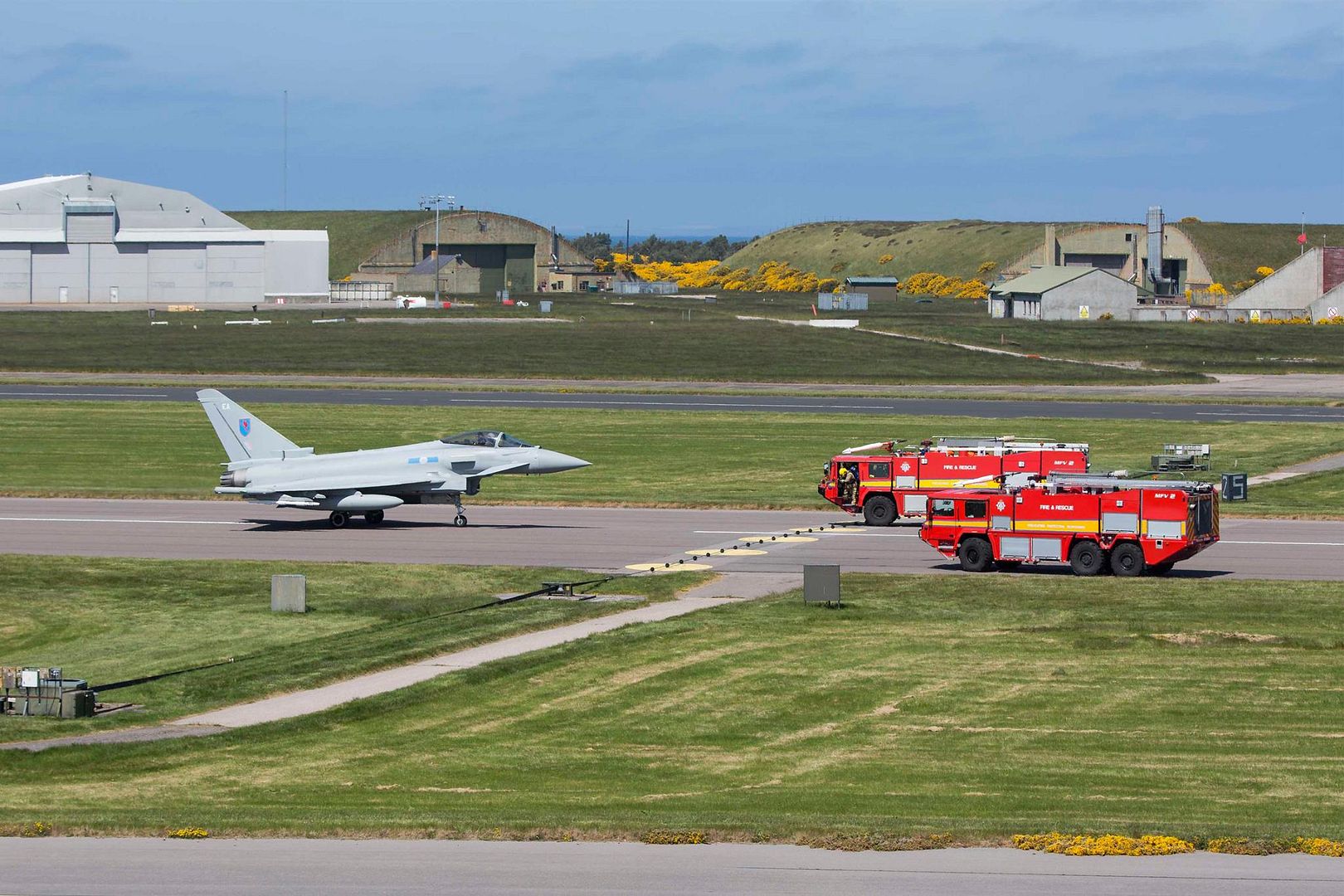
Tornado aircraft from RAF Lossiemouth had previously used the Kinloss Relief Landing Ground.
RAF Lossiemouth provides the UK?s the Quick Reaction Alert (Interceptor) North (QRA(I)N) force: maintaining aircraft and crews on high alert 24 hours a day, in order to scramble and intercept unidentified aircraft approaching UK airspace. As well as QRA(I)N, three Typhoon squadrons and the Tornado Operational Conversion Unit also fly and train from RAF Lossiemouth. This means the Relief Landing Ground at Kinloss Barracks, and Leuchars Airfield, provide military runways for aircraft to land should a routine landing at RAF Lossiemouth not be possible.
Squadron Leader Coffey added that the exercise at Kinloss Barracks would need to be repeated in the coming years to ensure the procedures remained fit for purpose.
Photographs: SAC Laura Bullas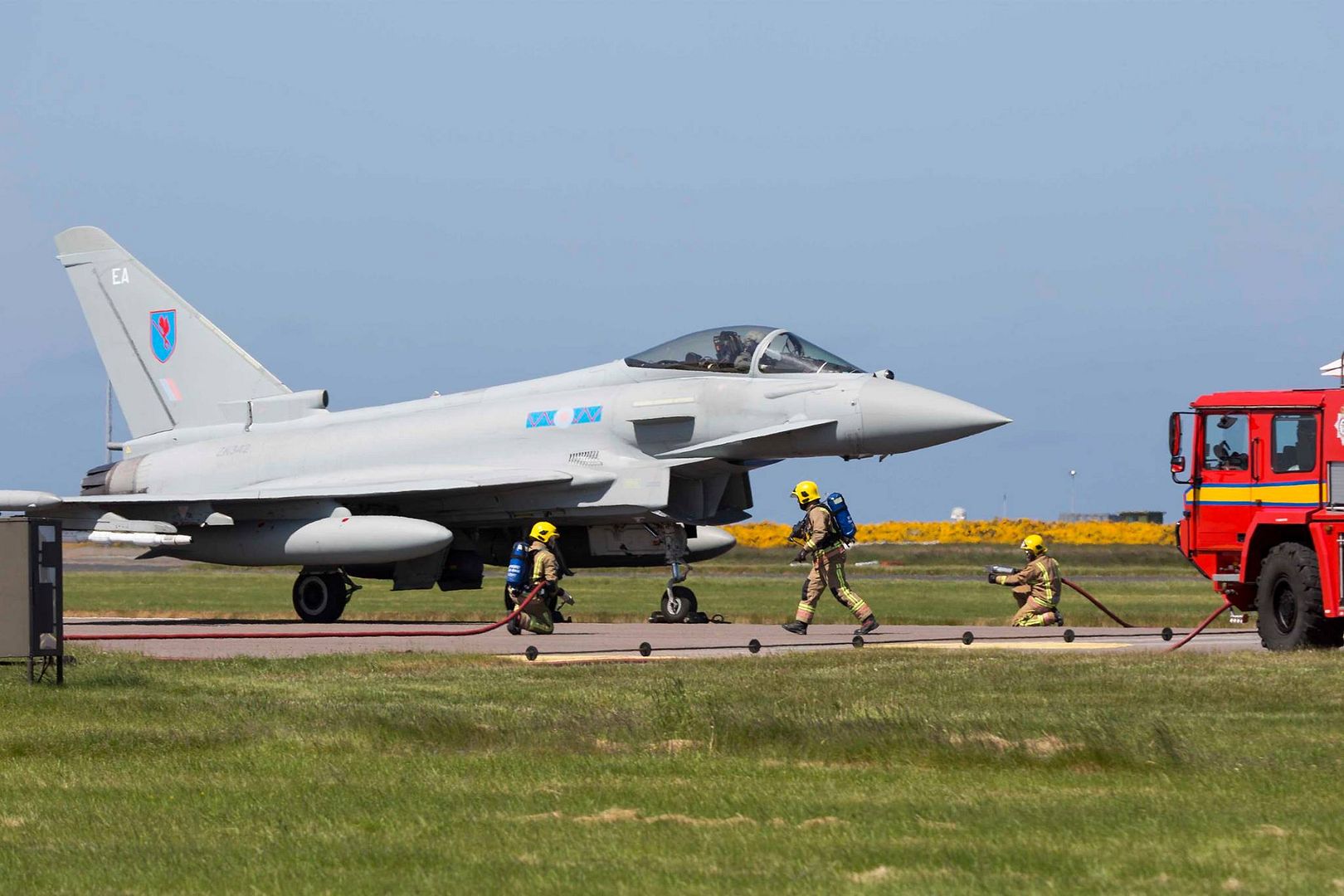
20-6-16
A CC-115 Buffalo aircraft gets a wash after landing on the tarmac at 19 Wing Comox. Photo: Sergeant Halina Folfas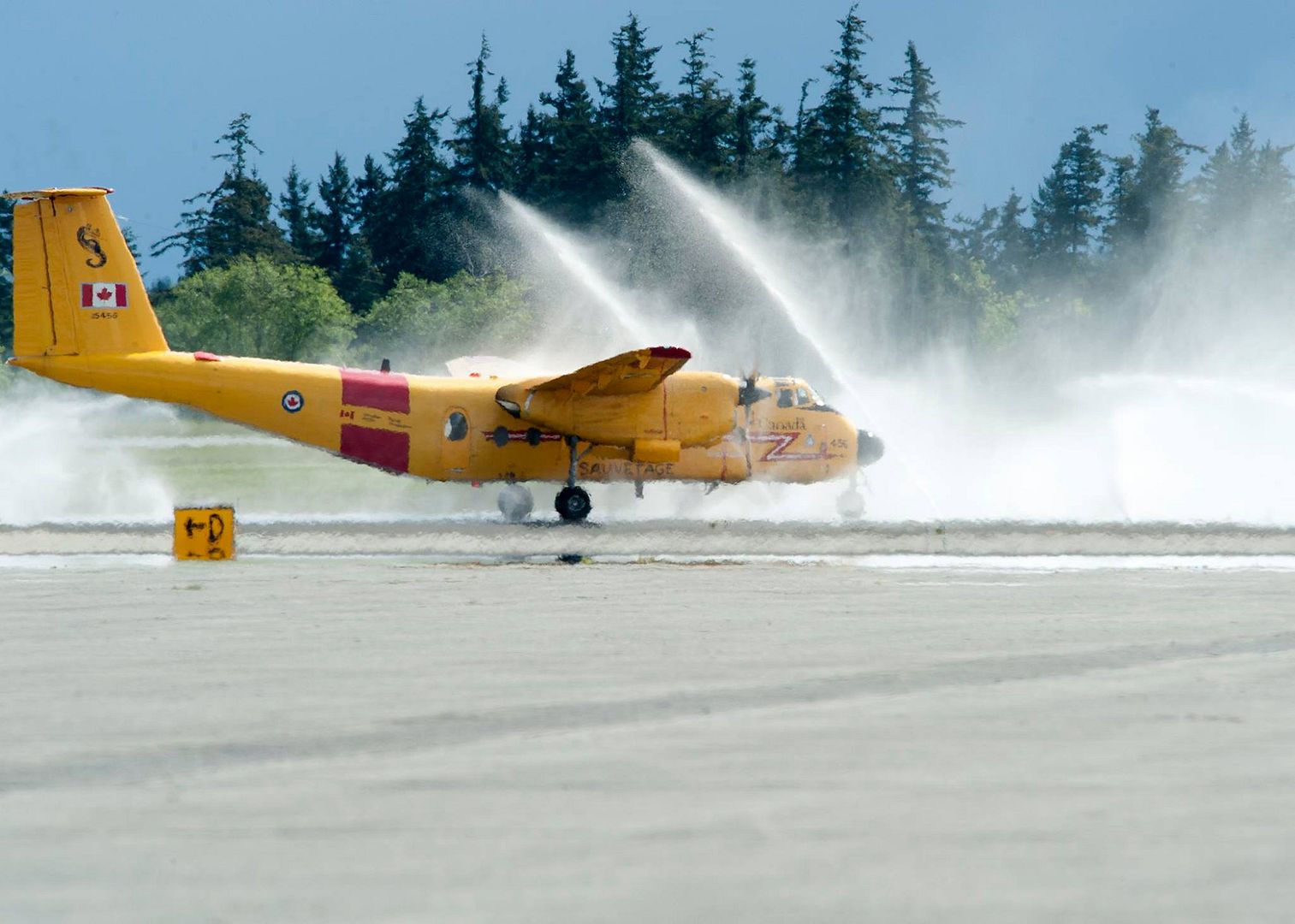
An A-10 Thunderbolt II from the 127th Wing, Michigan Air National Guard, lands on a remote highway strip near J?gala, Estonia after completing a simulated close air support mission in a combined arms live fire exercise during Saber Strike on June 20, 2016. Saber Strike is a long-standing U.S. Army Europe-led cooperative training exercise designed to improve joint interoperability through a range of missions that prepare the 14 participating nations to support multinational contingency operations.
(Minnesota National Guard photo by Tech. Sgt. Amy M. Lovgren/ Released)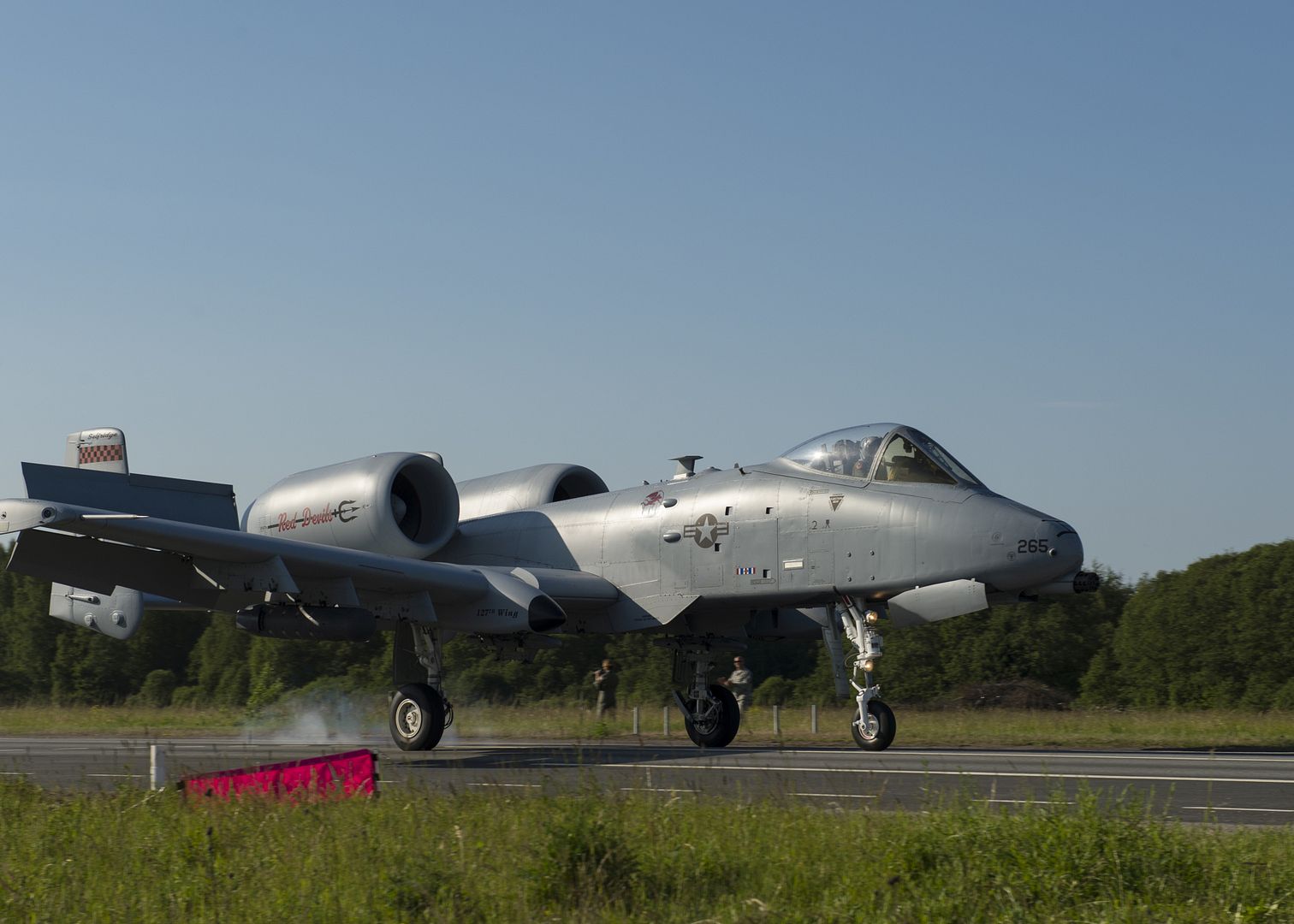
21 June 2016 Press Release
The world?s newest airliner, the Airbus A350XWB, will make its first demo tour of China between June 25th and July 2nd. During the eight day trip, A350 XWB test aircraft MSN2 (Manufacturer serial number) will fly to Beijing (PEK), Shanghai (SHA), Guangzhou (CAN), Haikou (HAK) and Chengdu (CTU).
The tour follows the A350?s endorsement by China Eastern Airlines who ordered 20 A350-900 aircraft in April 2016. Air China also ordered 10 A350-900. The unrivalled operational performance and cabin comfort of the A350 XWB will give Chinese airlines a competitive edge and to attract more passenger on international routes. China is one of the fastest growing markets for air transport and Airbus has supplied 50 per cent of the in-service commercial aircraft fleet in China.
Chinese aviation industry has made important contributions to the development and making of the A350 XWB. Airbus (Beijing) Engineering Centre together and its partner Aviation Industry Corporation of China participated in the programme?s development, involving specific design work for the airframe. Some five percent of the airframe is manufactured in China. The A350 XWB is a symbol of strategic industrial cooperation between Airbus and China?s aviation industry.
Featuring a distinctive ?Carbon? signature livery to reflect its primary construction from advanced materials, the MSN002 is one of Airbus? fleet of five test A350-900 aircraft and one of two with a fully functional cabin (42 business class and 210 economy class seats). The flights will be operated by Airbus flight crews.
The A350 XWB features the latest aerodynamic design, carbon fibre fuselage and wings, plus new fuel-efficient Rolls-Royce engines. Together, these latest technologies translate into unrivalled levels of operational efficiency, with a 25 per cent reduction in fuel burn and emissions, and significantly lower maintenance costs. The spaciousness, quietness, beautiful interior and ambient lighting in the cabin contribute to superior levels of comfort and well-being, setting new standards in terms of flight experience for all passengers.
To date, Airbus has recorded some 800 firm orders for the A350 XWB from 42 customers worldwide, already making it one of the most successful widebody aircraft ever.
June 20, 2016 Montr?al Commercial Aircraft, Press Release
Bombardier Commercial Aircraft announced today that a customer, who has requested to remain unidentified at this time, has signed a firm purchase agreement for 10 CRJ900 aircraft.
Based on the list price of the CRJ900 aircraft, the firm agreement is valued at approximately $472 million US.
?The modern and fuel efficient CRJ900 aircraft continues to maintain its solid footing and set industry benchmarks with its lower operating costs, outstanding operational flexibility and enhanced cabin amenities,? said Fred Cromer, President, Bombardier Commercial Aircraft. ?These are key drivers for the growth, profitability and success of airlines around the world and we are delighted that the CRJ900 aircraft is creating excellent value for a wide variety of operators with diverse business requirements.?
About CRJ Series Aircraft
Every 10 seconds a CRJ Series regional jet takes off somewhere in the world. The CRJ Series family of aircraft has transported almost 1.6 billion passengers to become the world?s most successful regional jet program -- linking people and communities like no other. The CRJ Series regional jets have revolutionized aviation with their proven efficiency, reliability and profitability.
The CRJ Series regional jets share commonality benefits that provide flexibility to operators and allow them to optimize their fleets to meet specific market demands. No other regional aircraft deliver this capability. Optimized for medium-haul regional routes, these aircraft can provide up to 10 per cent cash operating cost advantage over competing jets.
Each of the CRJ aircraft models offers its own distinct advantages. The CRJ200 regional jet offers outstanding ownership cost, ideal for opening new routes and markets. The CRJ700 regional jet is the lightest aircraft in its category, delivering impressive efficiency, performance and fuel burn savings, while the CRJ900 regional jet offers tremendous flexibility and is ideally suited for growing markets. The CRJ1000 regional jet, which has the highest passenger capacity in the family, delivers the lowest seat-mile cost in the regional jet market and burns up to 13 per cent less fuel than its competitors.
Since its launch, the CRJ Series family of regional jets has stimulated the regional jet market. In North America alone, it accounts for over 20 per cent of all jet departures. Globally, the family operates more than 200,000 flights per month.
The CRJ Series aircraft family includes over 100 owners and operators in approximately 40 countries and the worldwide fleet has logged over 43.5 million flight hours.
Including this order, Bombardier has booked a total of 1,902 firm orders for CRJ Series aircraft, including 428 CRJ900 aircraft.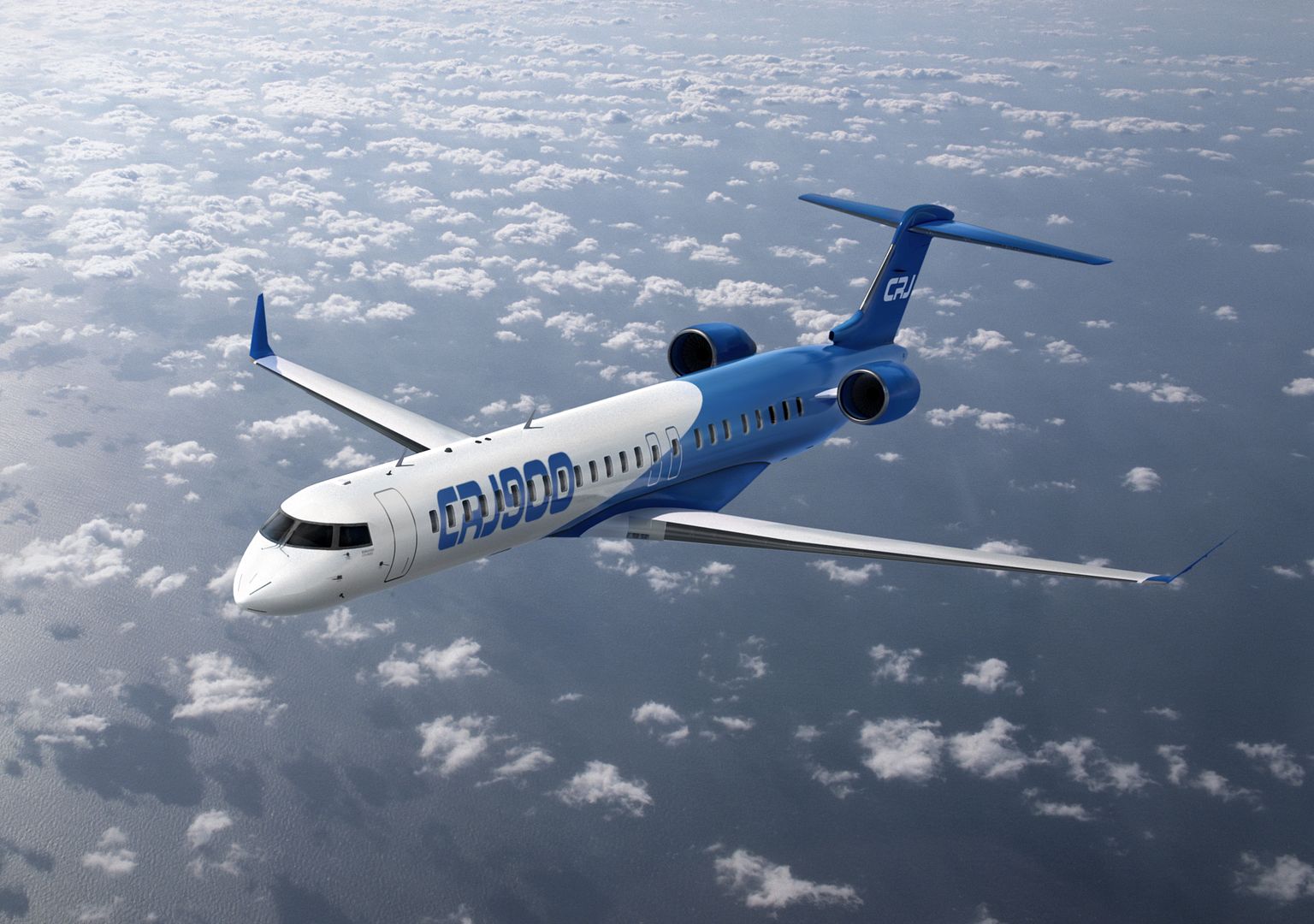
-
 Main AdminWESTERN PACIFIC (June 21, 2016) - An F/A-18E Super Hornet assigned to the Warhawks of Strike Fighter Squadron (VFA) 97 launches from USS John C. Stennis' (CVN 74) flight deck during routine flight operations. Providing a ready force supporting security and stability in the Indo-Asia-Pacific, John C. Stennis is operating as part of the Great Green Fleet on a regularly scheduled 7th Fleet deployment. (U.S. Navy photo by Mass Communication Specialist 3rd Class Kenneth Rodriguez Santiago / Released)
Main AdminWESTERN PACIFIC (June 21, 2016) - An F/A-18E Super Hornet assigned to the Warhawks of Strike Fighter Squadron (VFA) 97 launches from USS John C. Stennis' (CVN 74) flight deck during routine flight operations. Providing a ready force supporting security and stability in the Indo-Asia-Pacific, John C. Stennis is operating as part of the Great Green Fleet on a regularly scheduled 7th Fleet deployment. (U.S. Navy photo by Mass Communication Specialist 3rd Class Kenneth Rodriguez Santiago / Released)
WESTERN PACIFIC (June 21, 2016) - An F/A-18F Super Hornet assigned to the Black Aces of Strike Fighter Squadron (VFA) 41 launches from USS John C. Stennis' (CVN 74) flight deck during routine flight operations. Providing a ready force supporting security and stability in the Indo-Asia-Pacific, John C. Stennis is operating as part of the Great Green Fleet on a regularly scheduled 7th Fleet deployment. (U.S. Navy photo by Mass Communication Specialist 3rd Class Kenneth Rodriguez Santiago / Released)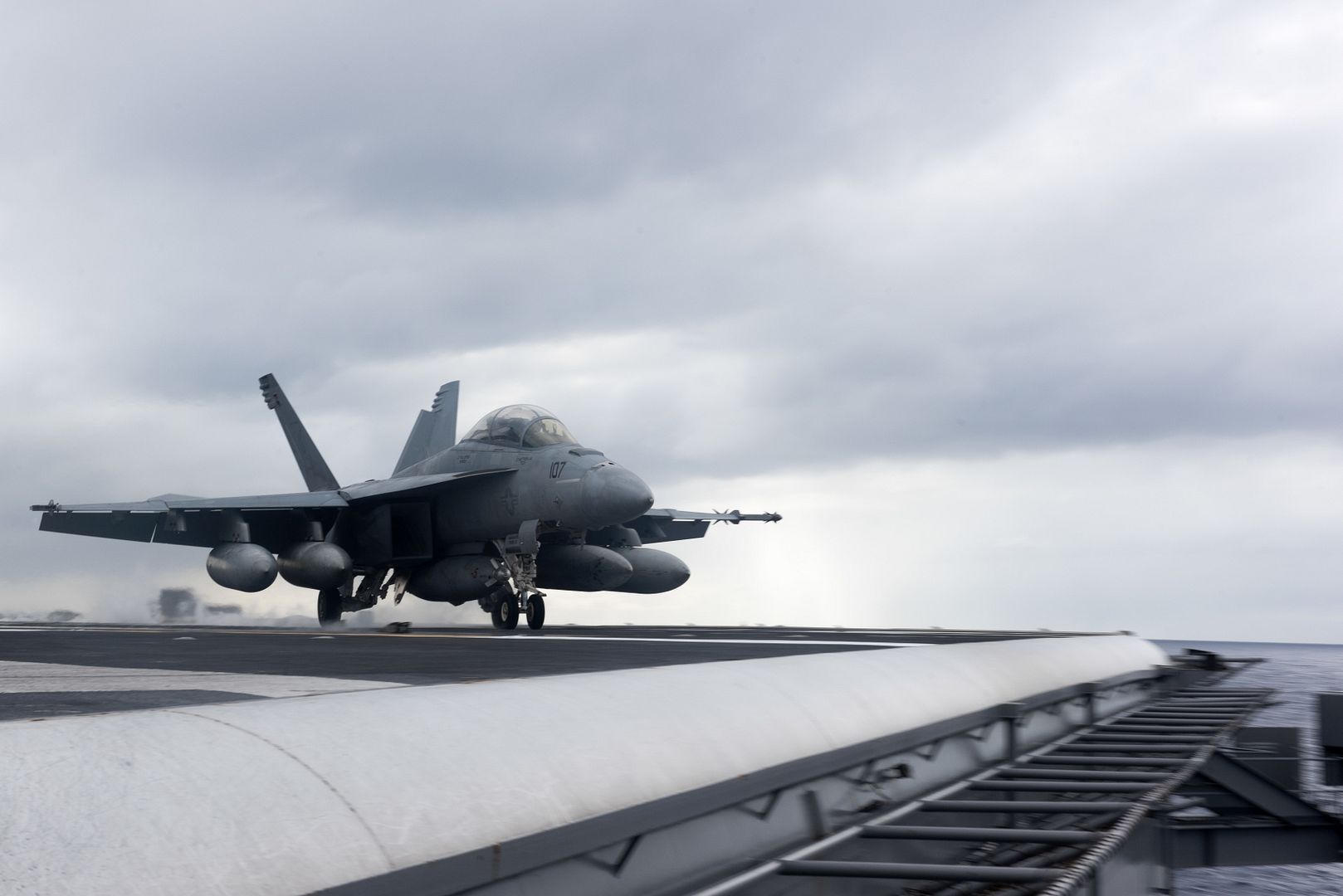
MARIETTA, Ga., June 21, 2016 ? The 61st Airlift Squadron at Little Rock Air Force Base, Arkansas, received a milestone Lockheed Martin (NYSE: LMT) C-130J Super Hercules airlifter on June 20. This is the last C-130J-30 delivery for the 61st, which operates a fleet of 14 Super Hercules airlifters.
Gen. Carlton D. Everhart II, commander, Air Mobility Command, Scott Air Force Base, Illinois, ferried the aircraft from the Lockheed Martin Aeronautics facility here. Everhart is a command pilot who has logged more than 4,500 flight hours in his career, which includes flying C-130E/H aircraft.
The 61st, which has operated C-130s since 1956, is part of Air Mobility Command's 19th Airlift Wing. The 19th Airlift Wing also includes another Super Hercules unit: the 41st Airlift Squadron. The 19th Airlift Wing has the distinction of operating one of the U.S. Air Force?s largest C-130J fleets with 28 Super Hercs in total.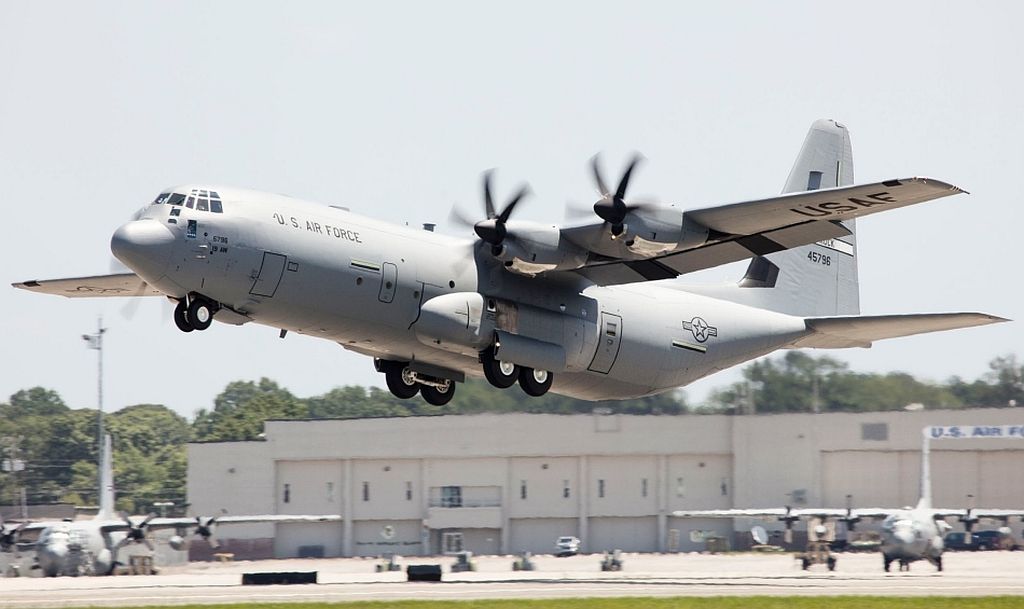
June 21, 2016 Montr?al Business Aircraft, Press Release
Bombardier Business Aircraft is pleased to announce its plan to establish a new, wholly owned Service Centre in the London, United Kingdom area. The Bombardier Service Centre will offer complete tip-to-tail heavy maintenance capabilities, and will complement the Bombardier Business Aircraft Service and Support Network in the United Kingdom.
Located at London Biggin Hill Airport (EGKB/BQH), the London Service Centre will feature 3,065 sq. metres (32,991 sq. feet) of hangar space. Set to be fully operational by the fourth quarter of 2016, the service centre will be fully equipped to perform scheduled and unscheduled maintenance, as well as modifications, avionics installations, and aircraft on ground (AOG) support for Bombardier Learjet, Challenger and Global aircraft. The facility will also bolster Bombardier Business Aircraft?s European parts presence.
?Enhancing our service and support in the UK is a top priority, as our aircraft installed base in the region is significant and growing. This expansion establishes our presence in the London area, providing our customers with greater flexibility, industry leading maintenance support and access to our entire Network, including our large inventory of parts available in the region,? said Andy Nureddin, Vice President and General Manager, Customer Services, Bombardier Business Aircraft. ?Strengthening our support in this important region helps ensure we are our customers? first choice, wherever and whenever their needs arise.?
?We are delighted that Bombardier Business Aircraft has chosen London Biggin Hill Airport to establish its first company owned and operated service centre in the United Kingdom,? said Robert Walters, Director, London Biggin Hill Airport. ?This facility will offer top maintenance support to operators in the region, and we look forward to welcoming Bombardier Business Aircraft customers to our airport.?
The London Service Centre will join an award-winning network of wholly owned Bombardier Business Aircraft service centres; as well as a line maintenance station in Nice, France and a total of 15 Customer Response Team mobile units worldwide. Bombardier Business Aircraft customers also have access to a broad network of nearly 50 Authorized Service Facilities around the world.
About Biggin Hill Airport
London Biggin Hill Airport (EGKB/BQH) is just 12 miles from central London and offers award-winning VIP handling, extensive hangarage, support and maintenance services for all ranges of business jets.
A designated UK Port of Entry, no runway slots and an exclusive six-minute helicopter transfer service to and from the NetJets London Heliport offers Biggin Hill customers the fastest touchdown to downtown of any London airport.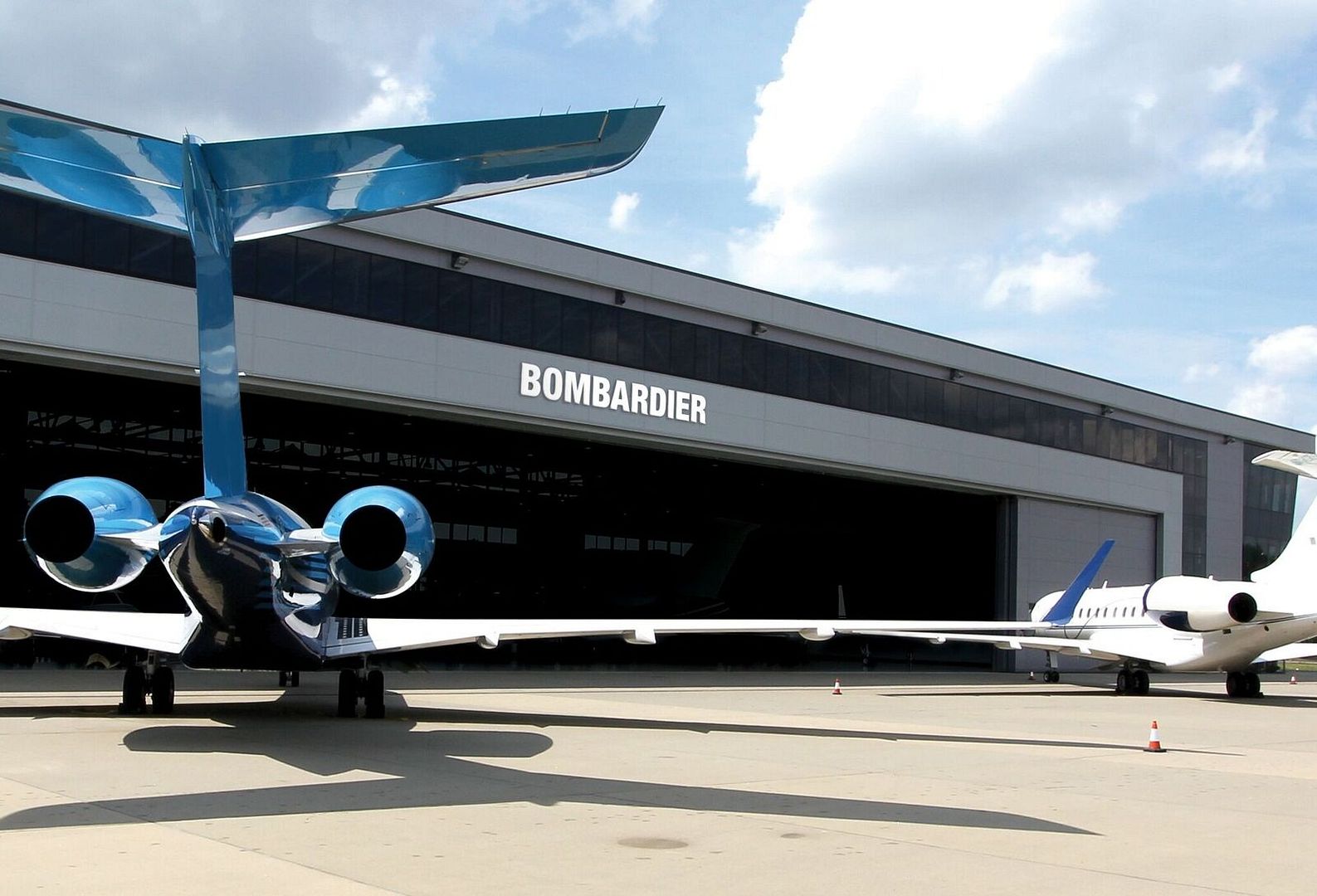
-
9 years ago
 Level 1Iran Air to buy 100 aircraft from Boeing
Level 1Iran Air to buy 100 aircraft from Boeing
Iran's state-owned carrier Iran Air has entered into a deal to buy 100 aircraft from US plane maker Boeing, marking a major step in US-Iran economic relations after sanctions were lifted on Tehran last year. Potentially worth $25bn at list prices, the deal is yet to receive necessary approvals from the US and Iran Governments.
Once approved, Iran Air will purchase aircrafts mainly from the new generation of Boeing 737 and 777 type aircraft. The 737 family of aircraft are single-aisle jets and typically used for flights of up to 5h, while, the 777 is a larger plane that can transport passengers for 12h or beyond. Boeing was quoted by BBC as saying: "Boeing will continue to follow the lead of the US Government with regards to working with Iran's airlines, and any and all contracts with Iran's airlines will be contingent upon US Government approval."
However, Boeing has not disclosed further details of the deal. With the purchase, Iran's civil aviation authority is planning to modernise its fleet by including between 400 and 500 aircraft over the next ten years.
In January, a separate deal was announced between French aerospace firm Airbus and Iran Air and is still waiting for approval from regulators in the US where a number of Airbus' parts are manufactured. The deal was for 118 new aircraft, reported Associated Press. Iran has also ordered 20 aircraft from French-Italian aircraft maker ATR. -
 Main AdminAir Force Lt. Col. Brandon Tellez, 525th Fighter Squadron commander and F-22 Raptor pilot, taxis in an F-22 after having flown his 1,000th hour in the fighter, at Joint Base Elmendorf-Richardson, Alaska, June 22, 2016. Tellez?s achievement comes after nine years as a Raptor pilot. (U.S. Air Force photo by Airman 1st Class Javier Alvarez)
Main AdminAir Force Lt. Col. Brandon Tellez, 525th Fighter Squadron commander and F-22 Raptor pilot, taxis in an F-22 after having flown his 1,000th hour in the fighter, at Joint Base Elmendorf-Richardson, Alaska, June 22, 2016. Tellez?s achievement comes after nine years as a Raptor pilot. (U.S. Air Force photo by Airman 1st Class Javier Alvarez)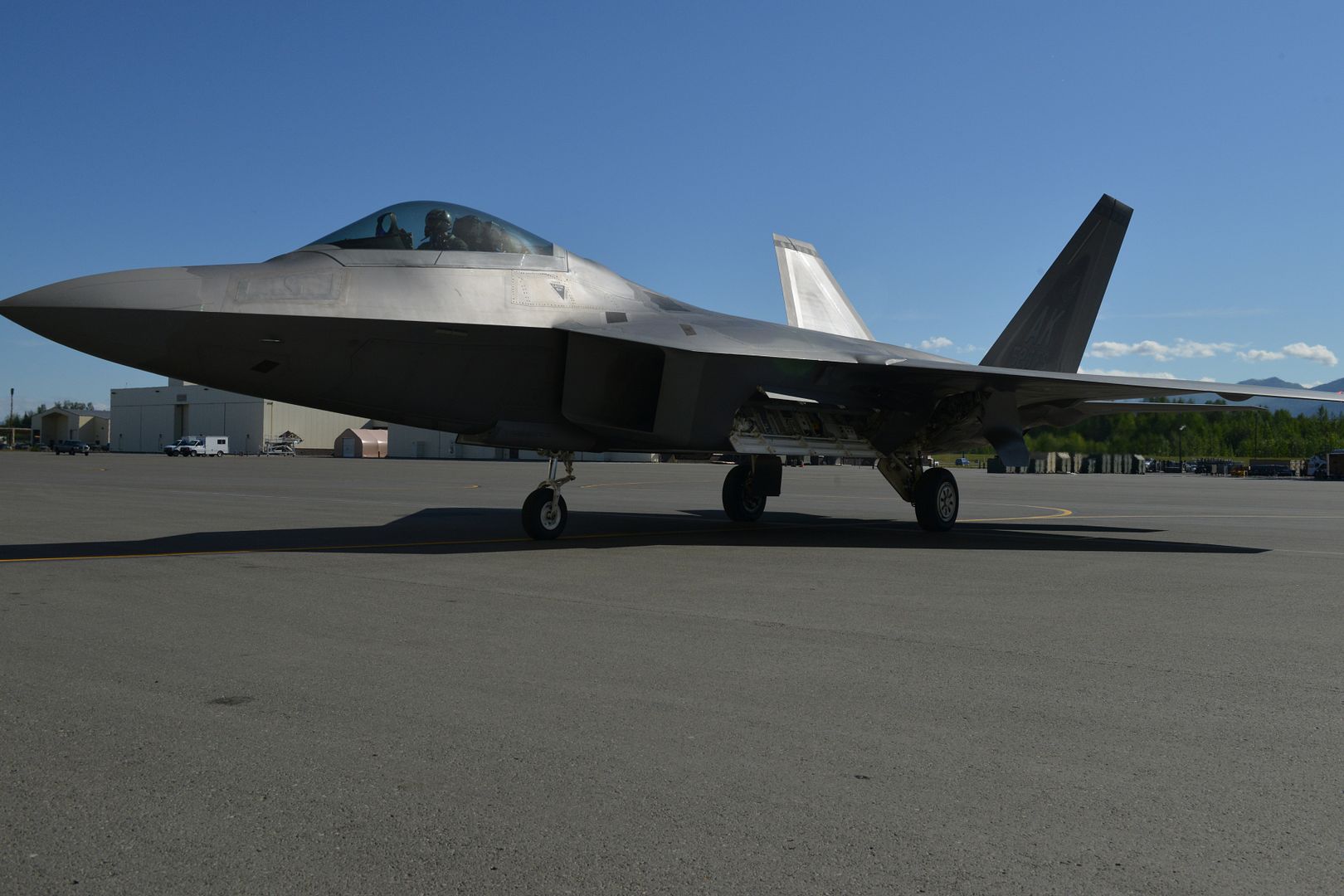
OSAN AIR BASE, Republic of Korea --
The Air National Guard is frequently called upon when U.S. Pacific Command needs additional assets to deliver rapid air capabilities in the Pacific region, and Airmen from the 148th Fighter Wing out of Duluth, Minnesota, are currently stepping up to that call.
The Airmen arrived at Osan in June to fulfill a Theater Security Package requested by U.S. PACOM and Pacific Air Forces.
?We?re here to back up active-duty forces and help deter regional threats,? said Lt. Col. Curt Grayson, 179th Expeditionary Fighter Squadron and 148th Aircraft Maintenance Unit commander.
6,000 Miles From Home
Moving the personnel and equipment needed to run the 148th?s aviation package wasn?t as simple as rolling out of Minnesota and flying 6,000 miles straight to the Republic of Korea; months of careful planning went on to ensure the guardsmen had all of the gear they needed, were properly trained and accomplished the tasks necessary to ensure the successful operation of an expeditionary fighter squadron.
The seeds of the operation were planted during a Red Flag exercise in Alaska in 2015, where 179th FS personnel worked alongside the 51st Fighter Wing?s 25th and 36th Fighter Squadrons.
The relationships born of that exercise set the guardsmen on a steady path, letting them quickly utilize the contacts they had made and not waste any time preparing to deploy, said Grayson.
?For our unit, it helped us figure out what we needed to do to fit into the Osan ?Fight Tonight? mentality,? he said.
Guard vs. Active Duty
One of the primary goals of the 148th FW personnel is to work side-by-side the active duty personnel around base, including full integration of 148th AMU backshops with their 51st FW counterparts.
?We all have different levels of experience,? said Maj. Mike Ketola, 148th Operations Support Squadron senior intelligence officer. ?People get [to Osan] and just when they?re getting comfortable after a year, they have to leave. We don?t really see that [in the 148th FW], we really get to practice and hone in on our experience, but we also get to make that experience available to other people and give opportunities to learn.?
An example of the experience from the 148th FW is a machinist with over 20 years of experience, which is virtually unheard of on the active duty side. Coupled with the standard one-year turn around rate at Osan, those 20-plus years of experience could be invaluable to the 51st FW?s machinist shop.
The Best of Both Worlds
A unique aspect of a traditional guardsman is that he or she lives and works full time as a civilian outside of their required duty time, which requires them to step away from their normal lives during deployments like this.
Ketola works fulltime as a middle school history and geography teacher. He said he sees his time in Korea as an opportunity to learn valuable lessons to bring back to his students.
He said, ?You learn something every day, and to be here practicing what we?re doing, it gives you ? experience and ideas that you can bring back home.
?I can bring some of these things back to my civilian world and give a real world example: I witnessed this, I?ve been there, this is what I?ve seen and that?s how I can apply it now. I like doing this because I can come back and share this knowledge not just with the military section, but on the civilian side with my kiddos.?
Mission Accomplished
Once the Minnesota guardsmen return home, the Bulldogs will be replaced by another ANG unit here. So far during the deployment, the Airmen of the 148th EFS and AMU accomplished dozens of training sorties, participated in a major exercise alongside the 51st FW and integrated into the active-duty inspection system.
?It?s been a success so far; the pilots are getting the training they need, the maintenance is providing them good aircraft, and we were able to participate in [Exercise Beverly Herd 16-01],? said Capt. William Carr, 148th AMU officer in charge. ?We?ve also learned quite a bit from the active duty Airmen, since their pace is quite a bit higher than ours.?
The constant exchange of information and experience between the guard and active duty Airmen fostered trust and understanding. It ensured American air power here on the Korean Peninsula is always ready to Fight Tonight.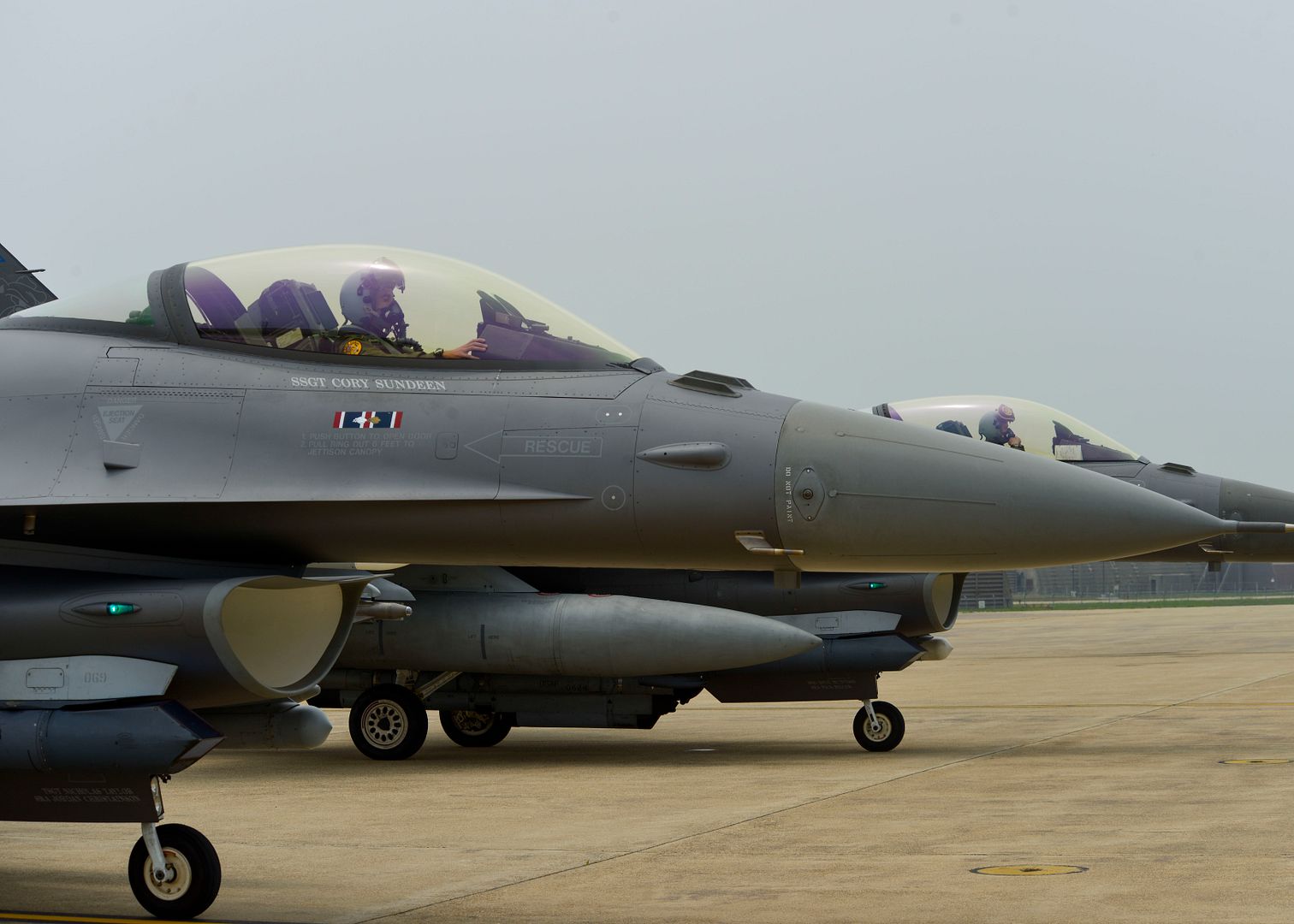
Two Royal Australian Air Force (RAAF) members on posting to the Joint Strike Fighter (JSF) Operational Test Team (JOTT) located at Edwards Air Force Base (AFB) in the United States (US) were part of the team that assessed the first international F-35 deployment when they accompanied the Royal Netherlands Air Force (RNLAF) on their deployment to the Netherlands earlier this month.
Flight Lieutenant (FLTLT) Ben Mason and Sergeant (SGT) Justin Kelly are two of 33 Australian personnel working full time in the US representing Australia?s interests in the global F-35 Program.
The role undertaken by FLTLT Mason and SGT Kelly in the JOTT is to test the F-35 air system in an operationally representative environment, the outcomes of which are critical to informing Australia on how best to support the F-35A aircraft.
Whilst they have been involved in other F-35 deployments with the US Air Force (USAF) and the US Marine Corps (USMC) during their time at the JOTT, the Netherlands deployment was the first opportunity to assess an international F-35A deployment.
SGT Kelly, a Maintenance Subject Matter Expert (SME), confirms that his position in the JOTT enables Australia to have an influential voice in the global F-35 Program.
?Australia being involved in the Initial Operational Test and Evaluation (IOT&E) at Edwards AFB has given us a huge voice in the F-35 Program and a chance to drive change in a direction that suits the RAAF?s interests.?
From an F-35 supportability perspective, both FLTLT Mason and SGT Kelly consider the F-35?s Autonomic Logistics Information System (ALIS) to be the defining difference to any other platform they have worked on.
?Maintaining a modern day fighter aircraft has been done before, but using ALIS to do so is cutting edge and will revolutionise the way we maintain aircraft? said SGT Kelly.
?ALIS provides the information system infrastructure (hardware, software and data) that performs maintenance management, fault diagnostics, supply support, mission planning, and training management across the F-35 weapon system.?
FLTLT Ben Mason, the Logistics IOT&E Coordinator, said he can see how his role directly influences Australia?s F-35A sustainment planning.
?We?ve been able to provide insight from our experiences here to help shape the way in which Australia will use and support the aircraft, including ALIS? said FLTLT Mason.
Air Commodore (AIRCDRE) Terry Saunder, Acting Head Joint Strike Fighter Division, said the RNLAF deployment to the Netherlands was a beneficial exercise.
?Having the opportunity to observe the preparation, pack-up, deployment and reconstitution of F-35A?s to the Netherlands provides Australia with valuable insight as we prepare to ferry our first two aircraft to Australia in 2018.? AIRCDRE Saunder said.
?This provides great confidence and reduces the risks we are managing as we plan to integrate this new and exciting capability into the broader Defence environment.?
The JOTT is a collaborative undertaking between the US, the United Kingdom, the Netherlands and Australia consisting of five operational test squadrons responsible for operating and maintaining all three variants of the F-35; plus three Integrated Project Teams who support operational test planning, execution and reporting activities.
The Australian Government has approved the acquisition of 72 Conventional Take-Off and Landing F-35A aircraft to replace the ageing F/A-18A/B Hornet fleet and has taken delivery of the first two of these jets, which have accumulated over 630 flying hours at the F-35A International Pilot Training Centre (PTC) at Luke AFB, Arizona.
Australia?s next eight aircraft will be delivered in 2018, two of which will be the first to be ferried to Australia. The remaining six will be temporarily based at the PTC at Luke AFB through to 2020.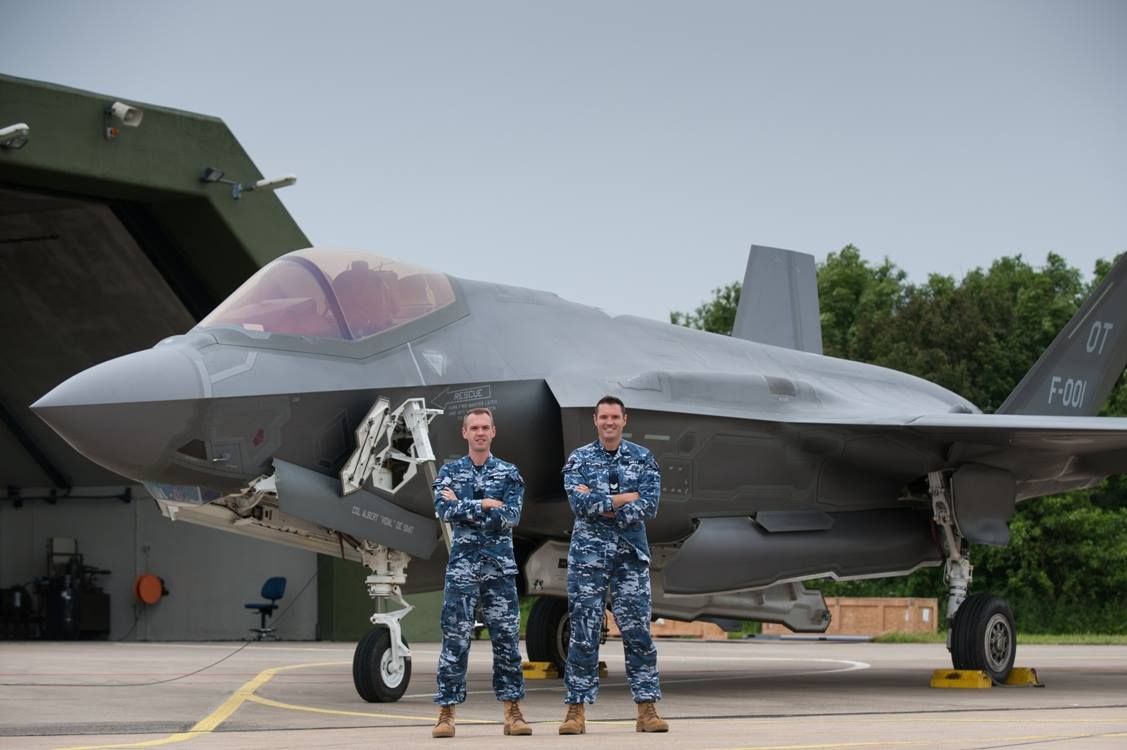
Fort Worth, Texas, June 22, 2016 ? Israeli and U.S. government leaders joined Lockheed Martin (NYSE: LMT) to celebrate the rollout of the first Israeli Air Force F-35A Lightning II, marking a major production milestone for the future of Israel?s national defense.
?Israel is proud to be the first country in the area to receive and operate it,? said Avigdor Liberman, Israel?s Minister of Defense. ?The F-35 is the best aircraft in the world and the choice of all our military leadership at its highest level. It is clear and obvious to us and to the entire region that the new F-35, the Adir, will create real deterrence and enhance our capabilities for a long time.?
Brig. Gen. Tal Kelman, IAF Chief of Staff said, ?As a pilot who has flown more than 30 years in a great variety of aircraft, I had the privilege of flying the F-35 simulator in Fort Worth and it was like holding the future in my hands. The unique combination of split-edge technology, lethality and the amazing man-machine interface will lead the world to the fifth generation."
Joining the Minister at the ceremony, attended by more than 400 guests from government, the military and industry, were the Honorable U.S. Ambassador to Israel Daniel Shapiro; Minister Tzachi Hanegbi of Israel?s Office of the Prime Minister; Heidi Grant, Deputy Under Secretary of the U.S. Air Force for International Affairs; Lt. Gen. Chris Bogdan, F-35 Program Executive Officer, Texas Governor Greg Abbott, and Texas State Congressman Craig Goldman.
?We?re honored to partner with Israel and help strengthen the deep and lasting partnership between our two nations,? said Marillyn Hewson, Lockheed Martin Chairman, President and CEO at the ceremony. ?The F-35 will help Israel remain a beacon of strength and stability in the region and support a safe and secure homeland for generations to come.?
Israel?s F-35, called Adir ? which means ?Mighty One? in Hebrew ? will be a significant addition to maintaining Israel?s qualitative military edge in the Middle East region, with its advanced capability to defeat emerging threats, including advanced missiles and heavily-defended airspace. The F-35 combines advanced low observable stealth technology with fighter speed and agility, fully fused sensor information, network-enabled operations and advanced sustainment support.
Israel?s program of record is 33 F-35A Conventional Take Off and Landing, or CTOL, aircraft, acquired through the U.S. government?s Foreign Military Sales (FMS) program. Israel?s contribution to the F-35 program includes Israel Aerospace Industries F-35A wing production; Elbit Systems Ltd. work on the Generation III helmet-mounted display system, which all F-35 pilots fleet-wide will wear; and Elbit Systems-Cyclone F-35 center fuselage composite components production.
Three distinct variants of the F-35 will replace the F-16 Fighting Falcon and A/OA-10 Thunderbolt II for the U.S. Air Force, the F/A-18 Hornet for the U.S. Navy, the F/A-18 and AV-8B Harrier for the U.S. Marine Corps, and a variety of fighters for at least 11 other countries. Following the U.S. Marine Corps' July 2015 combat-ready Initial Operational Capability (IOC) declaration, the U.S. Air Force and U.S. Navy intend to attain service IOC this year and in 2018, respectively. More than 170 delivered F-35s have flown more than 60,000 flight hours, fleet-wide.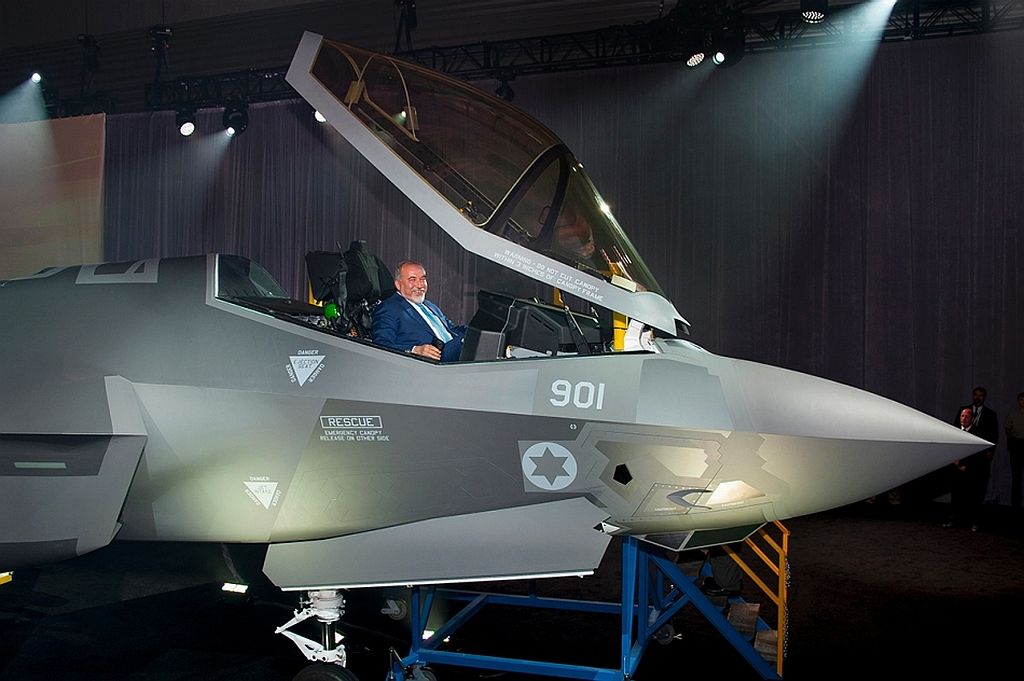
-
9 years ago
 Level 1FAA releases rule Part 107 for commercial drones
Level 1FAA releases rule Part 107 for commercial drones
The US Department of Transportation's Federal Aviation Administration (FAA) has released the first operational rules for routine commercial use of small unmanned aircraft systems (UAS) or drones. Named Part 107, the new rule will be effective in late August and encourages the full integration of UAS into the nation's airspace.
Apart from providing safety regulations for unmanned aircraft drones weighing less than 55p and conducting non-hobbyist operations, the new rules work to control new innovations safely, to stimulate job growth, advance critical scientific research, and save lives. It is estimated that the regulation could generate over $82bn for the US economy and create more than 100,000 new jobs over the next ten years.
FAA's administrator Michael Huerta said: "With this new rule, we are taking a careful and deliberate approach, which balances the need to deploy this new technology with the FAA's mission to protect public safety."
Designed to reduce risk to other aircraft, people, and property, the new regulations require pilots to keep an unmanned aircraft within visual line of sight. Operations are allowed during daylight, or at night if the drone has anti-collision lights. The regulation also mentions height and speed restrictions, as well as other limits, including prohibiting flights over people who are not directly participating in the UAS operation.
The new rules also define an age restriction for drone control of 16 years, as well as the requirement of a remote pilot certificate with a small UAS rating or direct supervision by someone with a certificate. Drone operators have to ensure the safety of their own vehicles before flying.
However, FAA is not urging small UAS to comply with existing agency airworthiness standards or aircraft certification. In addition, the new rules do not cover privacy issues, but the FAA will address considerations in this area.
Under a privacy education campaign, the agency will provide all drone users with recommended privacy guidelines as part of the UAS registration process and will educate all commercial drone pilots on privacy during their certification process.
FAA noted that Part 107 will not apply to model aircraft and the operators are mandated to continue to satisfy all the criteria specified in section 336 of Public Law. -
9 years ago
 Level 1ISRO launches 20 satellites in a single flight
Level 1ISRO launches 20 satellites in a single flight
The Indian Space Research Organisation (ISRO) has launched 20 satellites on a single flight from Satish Dhawan Space Centre in Sriharikota, India.
Launched aboard a PSLV-C34 rocket, the total weight of the satellites reached 1,288kg. During the PSLV family's 36th flight, the PSLV-C34 carried a 727.5kg Cartosat-2 Series satellite and 19 co-passenger satellites. At 16 minutes 30 seconds after liftoff, the satellites achieved a polar Sun Synchronous Orbit and in the succeeding 10 minutes, the 20 satellites were separated from the PSLV in a predetermined sequence.
Over the next few days, the Cartosat-2 series satellite will be brought to its final operational configuration, where it will start providing remote sensing services. Images sent by the satellite will be used for various cartographic, urban, and rural applications, as well as for coastal land use regulation, and utility management purposes, such as road network monitoring, water distribution, creation of land use maps, and precision studies.
Out of the 19 co-passenger satellites, two known as Sathyabamasat and Swayam were built with the involvement of students from India's Sathyabama University and the College Of Engineering. Of the remaining 17 co-passenger satellites, two were owned by Canada, one by Germany, one by Indonesia, and 13 by the US.
The government of Canada stated that the Maritime Monitoring and Messaging Microsatellite (M3MSat) will help improve ship detection and marine traffic management in Canadian waters. -
 Main AdminWASHINGTON (AFNS) -- Air Force officials announced fives bases as candidates for the next round of active duty-led KC-46A Pegasus basing on June 23.
Main AdminWASHINGTON (AFNS) -- Air Force officials announced fives bases as candidates for the next round of active duty-led KC-46A Pegasus basing on June 23.
The bases include Dover Air Force Base, Delaware; Fairchild AFB, Washington; Grand Forks AFB, North Dakota; Travis AFB, California; and Joint Base McGuire-Dix-Lakehurst, New Jersey.
The KC-46As are expected to begin arriving at the second active duty-led global mobility wing in fiscal year 2020.
?The KC-46A Pegasus aerial tanker remains one of our top acquisition priorities,? said Air Force Secretary Deborah Lee James. ?It is absolutely essential that we replace our aging tanker fleet so we have the aircraft necessary to maintain the nation?s global reach for years to come.?
Air Mobility Command will soon conduct detailed, on-the-ground site surveys of each candidate base in approved assessment areas. They will assess each location against operational requirements, potential impacts to existing missions, housing, infrastructure and manpower.
Additionally, AMC will develop cost estimates to bed down the KC-46A for each candidate base. Once the site surveys are completed, the results will be briefed to Air Force leadership who will select preferred and reasonable alternatives for the operating location. The Air Force plans to announce the second active duty-led KC-46A preferred alternative by the end of 2016.
"Bringing the KC-46A online is a critical first step in recapitalizing a tanker fleet that has been at the heart of global response for more than five decades," said Air Force Chief of Staff Gen. Mark A. Welsh III. "This great new aircraft will achieve better mission-capable rates, suffer less maintenance downtime, and improve the U.S. military's ability to respond rapidly to humanitarian crises and contingency operations around the world.?
The Air Force also stressed the importance of its strategic basing process in creating deliberate, repeatable and standardized decisions.
?In this process, the Air Force uses criteria-based analysis and military judgment,? said Jennifer Miller, the deputy assistant secretary of the Air Force for installations. ?We look forward to the next phase of the process when the preferred alternative is announced and our candidate base communities have an opportunity to participate by providing input for the environmental analysis.?
The KC-46A will provide improved capability, including boom and drogue refueling on the same sortie, worldwide navigation and communication, airlift capability on the entire main deck floor, receiver air refueling, improved force protection and survivability, and multipoint air refueling capability.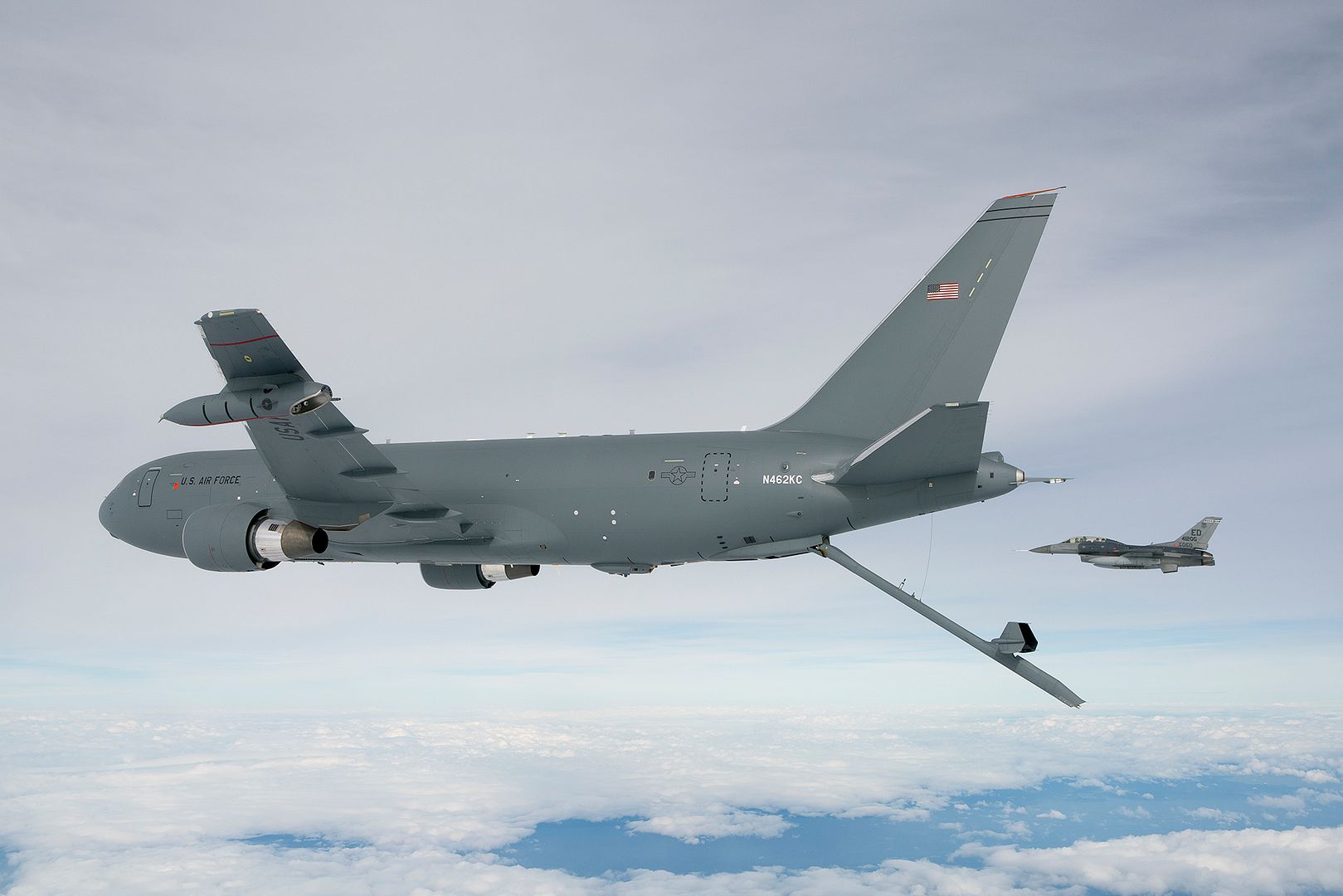
OAK HARBOR, Wash. (June 22, 2016) Sailors from Patrol Squadron (VP) 30 attach a tow bar to a P-8 Poseidon preparing to move it into Patrol and Reconnaissance Wing 10's newly renovated hangar six on Naval Air Station Whidbey Island's Ault Field for the first time. The P-8 is scheduled to replace the P-3, in naval service since the 1960s, no later than 2020. (U.S. Navy photo by Mass Communication Specialist 2nd Class John Hetherington/Released)
An A-29 Super Tucano from the 81st Fighter Squadron runs its engine prior to takeoff, June 23, 2016, at Moody Air Base, Ga. The 81st FS is the only combat-mission ready fighter squadron in the Air Education and Training Command. (U.S. Air Force photo by Tech. Sgt. Zachary Wolf/Released)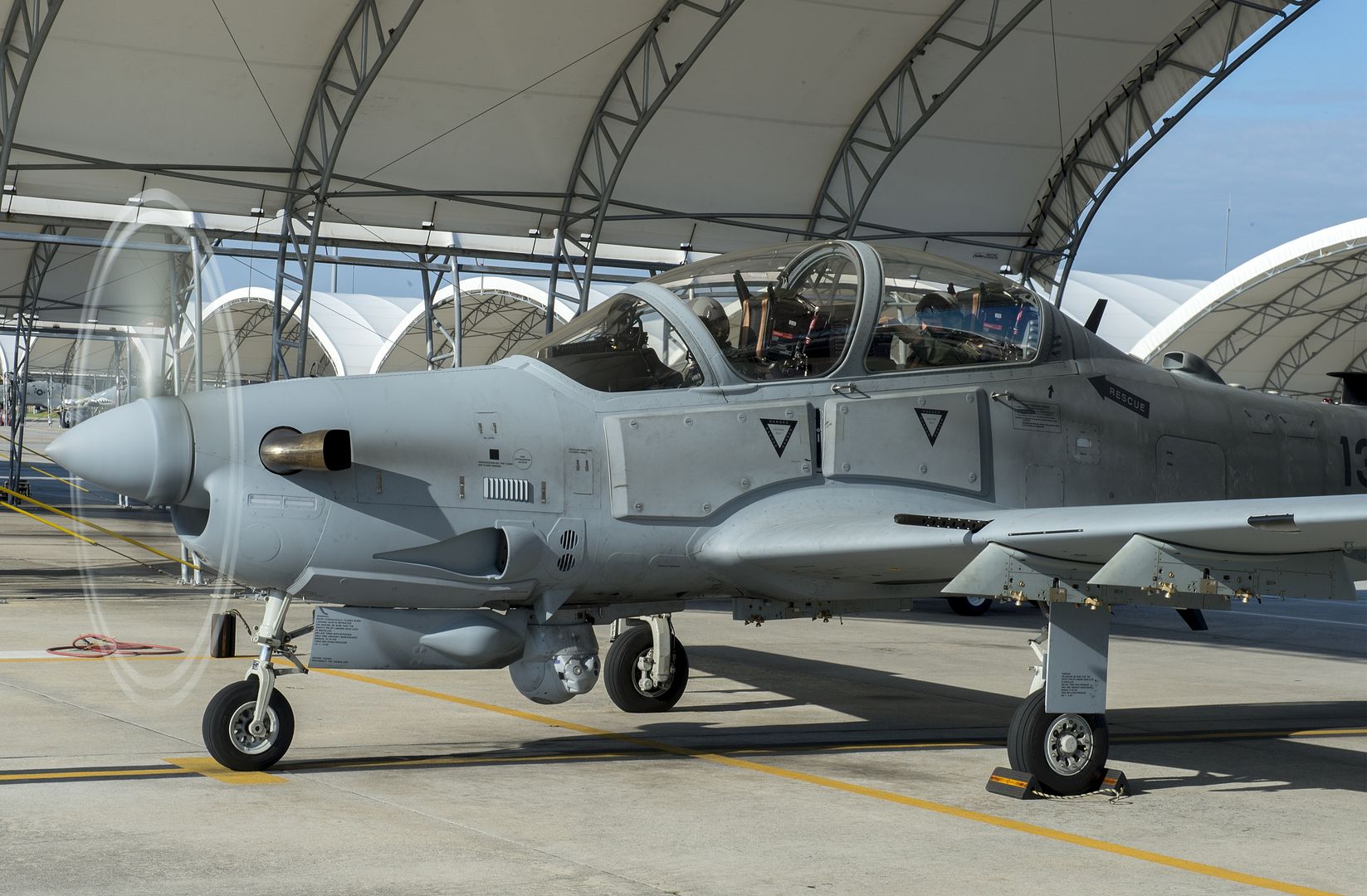
An A-29 Super Tucano from the 81st Fighter Squadron runs its engine prior to takeoff, June 23, 2016, at Moody Air Base, Ga. The 81st FS conducts combat training for Afghan Air Force pilots and maintainers in the A-29 Super Tucano. (U.S. Air Force photo by Tech. Sgt. Zachary Wolf/Released)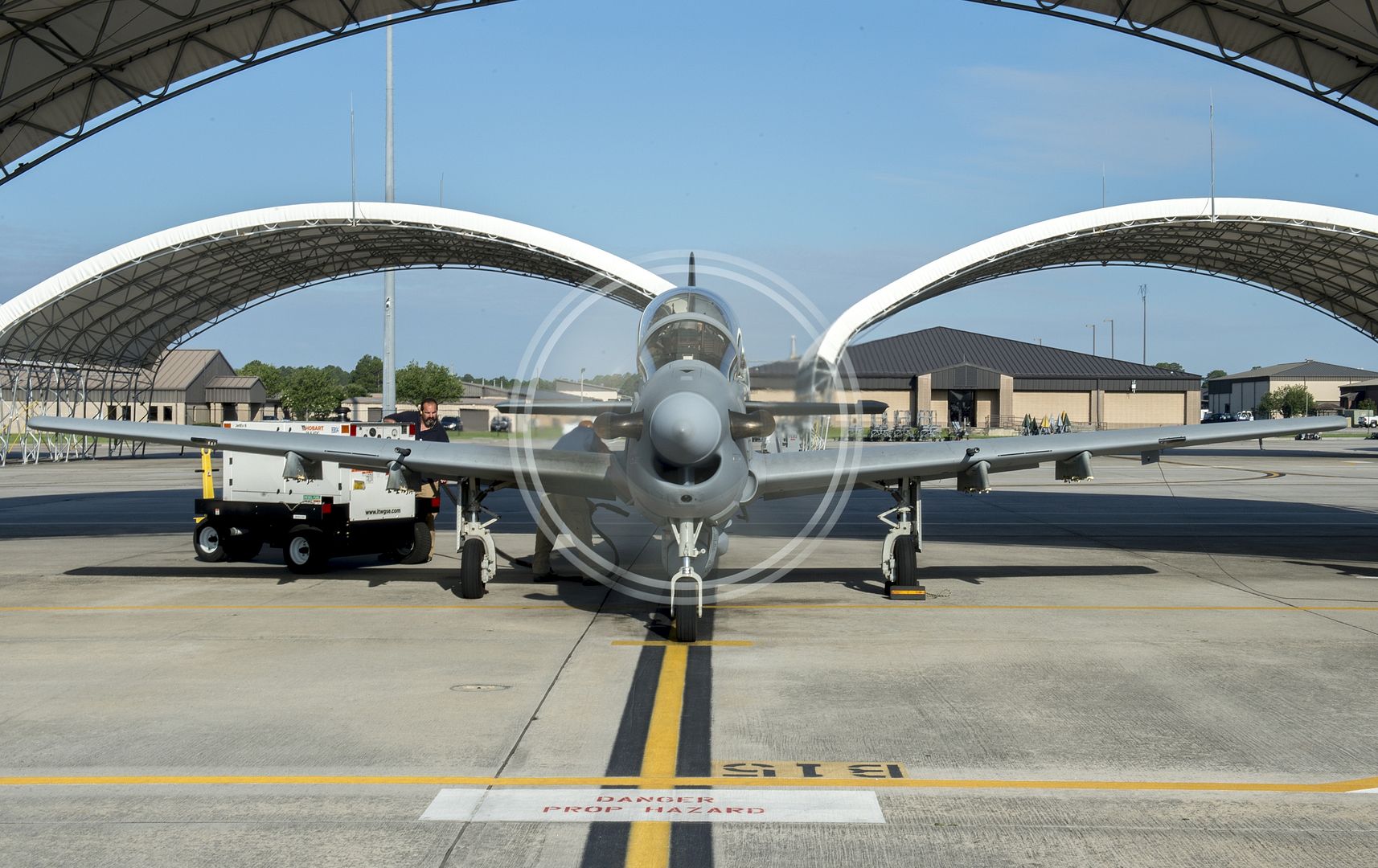
A U.S. Soldier of Joint Multinational Readiness Center (JMRC) (Operations Group) Falcon Observer Coach Trainer Team flies a UH-72A Lakota helicopter while participating in a flight operation mission during Swift Response 16 training exercise at the Hohenfels Training Area, a part of the JMRC, in Hohenfels, Germany, Jun. 23, 2016. Exercise Swift Response is one of the premier military crisis response training events for multi-national airborne forces in the world. The exercise is designed to enhance the readiness of the combat core of the U.S. Global Response Force ? currently the 82nd Airborne Division?s 1st Brigade Combat Team ? to conduct rapid-response, joint-forcible entry and follow-on operations alongside Allied high-readiness forces in Europe. Swift Response 16 includes more than 5,000 Soldiers and Airmen from Belgium, France, Germany, Great Britain, Italy, the Netherlands, Poland, Portugal, Spain and the United States and takes place in Poland and Germany, May 27-June 26, 2016. (U.S. Army photo by Pfc. Randy Wren/Released)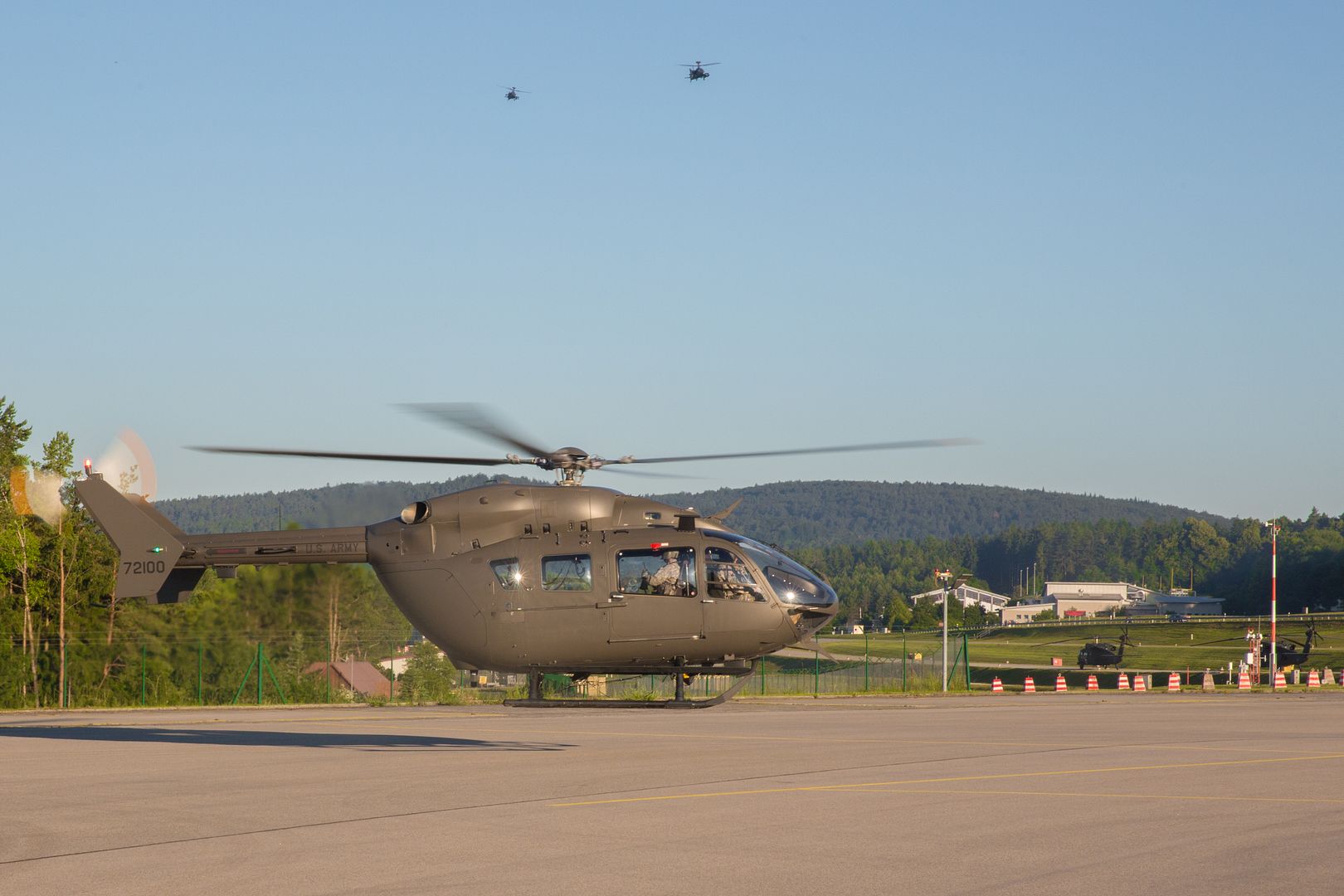
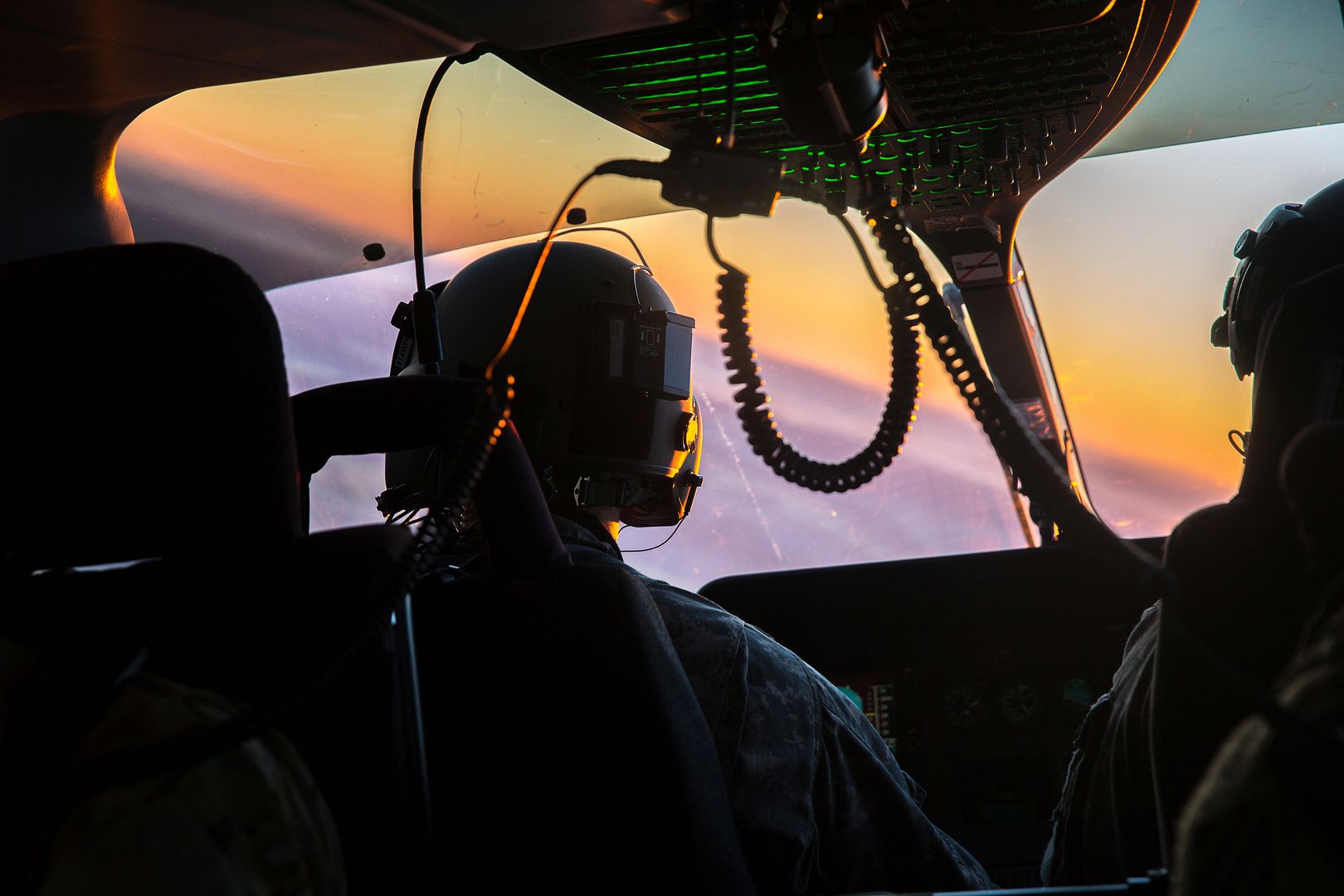
U.S. Air Force Senior Airman Andy Bui, 355th Aircraft Maintenance Squadron A-10C Thunderbolt II crew chief, prepares to perform a pre-flight checklist on the flightline at Davis-Monthan Air Force Base, Ariz., June 23, 2016. The checklists are designed to ensure the safety of the aircraft and pilot before takeoff. (U.S. Air Force photo by Airman 1st Class Mya M. Crosby/Released)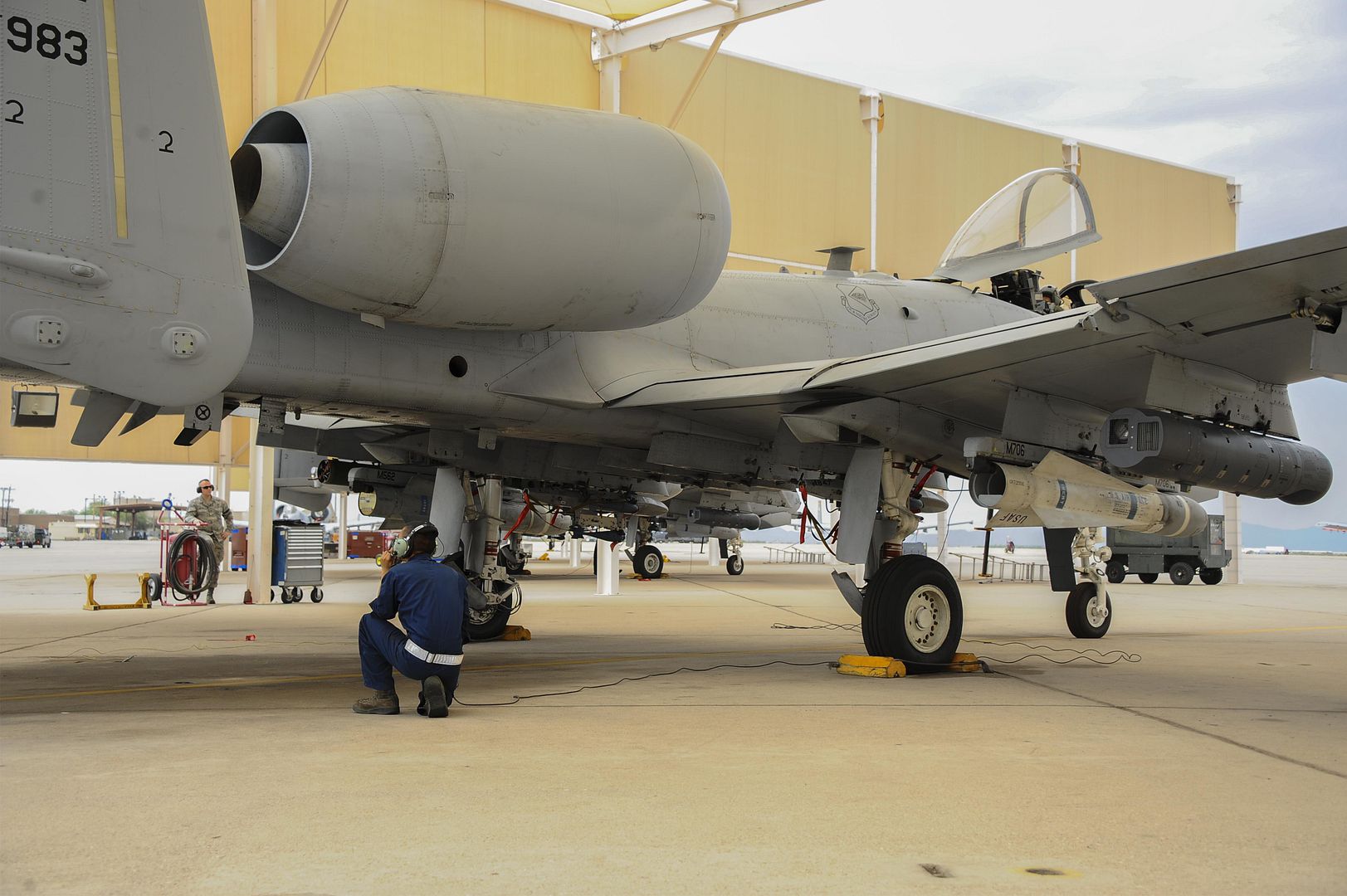
6/23/2016 - JOINT BASE MCGUIRE-DIX-LAKEHURST, N.J.-- -- Residents of Ocean County got to experience firsthand the history of their community last week when a U.S. Navy airship made its way over Lakehurst.
The "blimp" belongs to the Naval Air Systems Command, headquartered in Patuxent River, Maryland, and is housed inside Hangar 1 on the Lakehurst side of MDL when not in use. NAVAIR's mission is to provide full life-cycle support to naval aircraft, weapons, and systems operated on by Sailors and Marines.
"In the hay day of the Navy Airship Program, many of these aircraft called Lakehurst home," said Carl Jablonski, president of the Navy Lakehurst Historical Society.
The "hay day" of Lakehurst and the "Lighter than Air Program" took place in the 1930's when the Navy's rigid airships peaked with the construction of enormous lighter-than-air vehicles that served as the "eyes" of the fleet. One of the most notorious airships was the Hindenburg that crashed at then NAS Lakehurst in 1937.
Unfortunately, as technology progressed through the years, the Navy began using less and less airships - making their appearances around New Jersey sparse.
"In the past, this was a major hub for lighter-than-air vessels," said Lt. Cmdr. Andy Bellina, Naval Support Activity, Lakehurst and air operations officer for the 305th Operations Support Squadron. "Now, we only see activity every few years when a mission need arises."
In his time on station at the joint base, Bellina had never seen the blimp in the local area. He's hopeful, however, that residents around Lakehurst were able to catch a glimpse of the airship operating in the local airspace.
"We get a vast assortment of various service aircraft at the base," explained Bellina. "So it was exciting, at least for my team and hopefully the town, to see and work with a navy blimp."
The mammoth doors of Hangar 1 created a perfect backdrop to the airship, explained Bellina. Watching the aircraft circle overhead, he believes it was easy to imagine the installation back in the 30's, with enormous airships roaming the skies.
"It was impressive to reach back in time to see airship operations in action," said Bellina. "Given the history of the base and the surviving infrastructure, I could not think of a better place to see a blimp return to the skies of Lakehurst."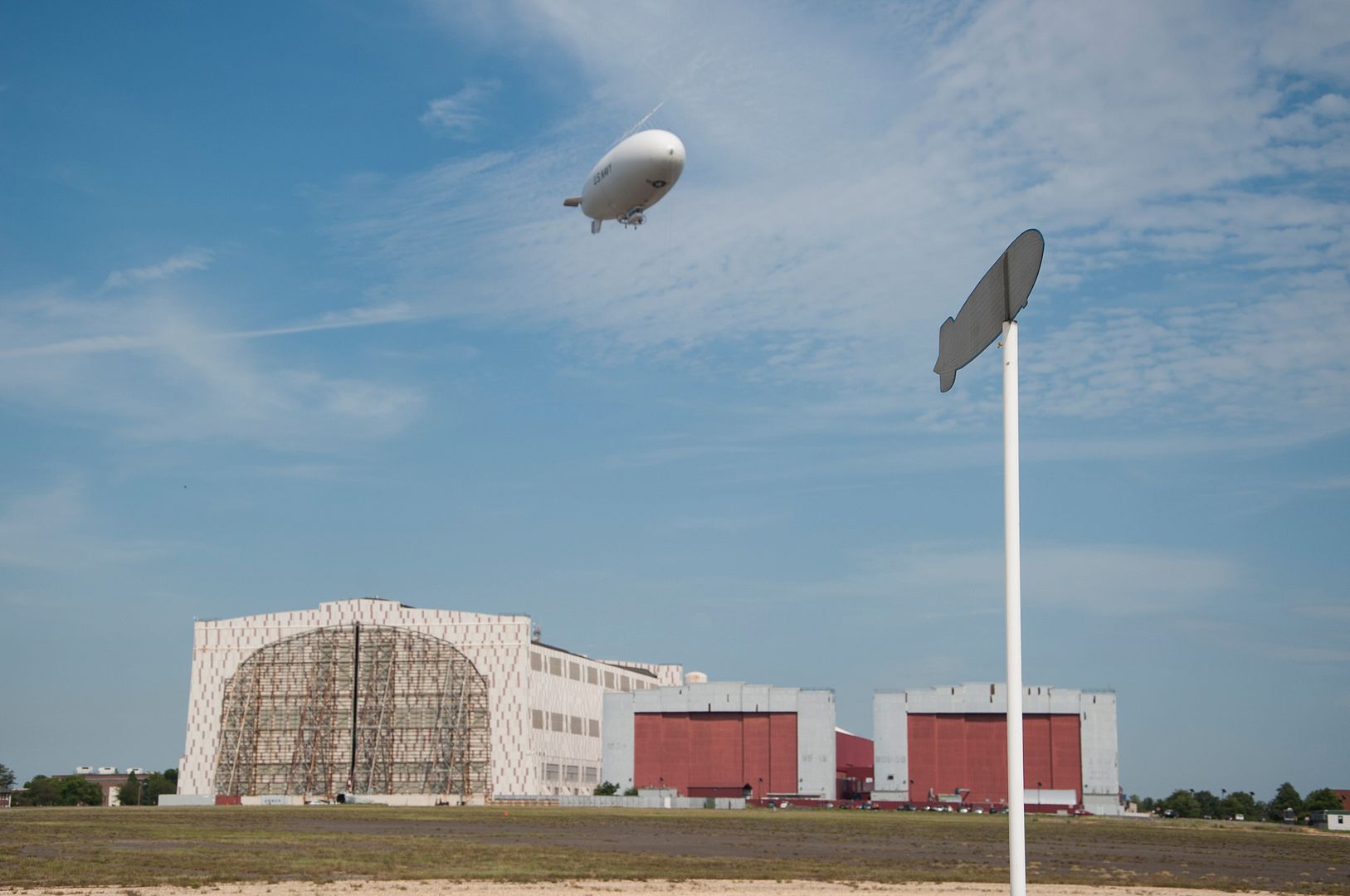
June 24th.
Air Combat Group congratulates its newest graduates from Hawk 127 Fighter course. Number 76 Squadron conducted a three ship aerial display at their Family Day today to commemorate the graduation of the 12 trainees - two Weapons Systems Officers and 10 new Pilots. These pilots will go on to either F35 JSF training, E/A-18G Growler training or to Number 2 Operational Conversion Unit for F/A-18A training. We wish all the trainees the best of luck with their future training.
Image credit to Jarryd Stock.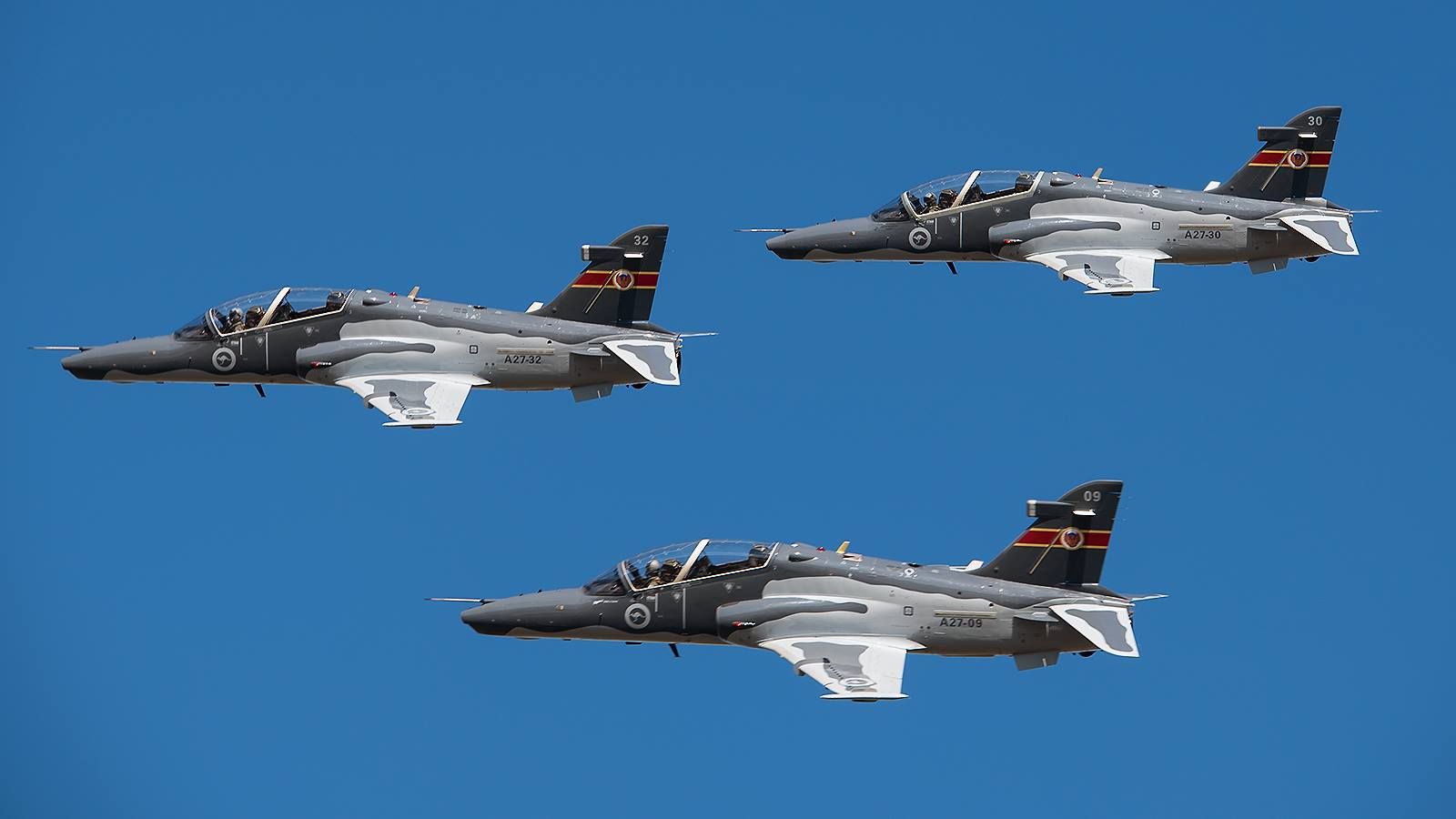
WEST PALM BEACH, Fla., ? June 23, 2016 Lockheed Martin (NYSE:LMT) today announced the CH-53K King Stallion successfully completed an external lift of a 27,000 pound payload at Sikorsky?s Development Flight Test Center in West Palm Beach, Fla.
The aircraft executed an ?out of ground effect? (OGE) external load test at 100 feet above the ground while performing hover maneuvers to demonstrate its excellent control authority in this flight regime. An OGE load is the most stressful of lift conditions for a helicopter from a power required standpoint. OGE is defined as an altitude greater than the helicopter's main rotor diameter (79 feet in the King Stallion's case) where power demand greatly increases due to loss of the benefit of ground effect.
?This 27,000 pound external lift is yet another key milestone for the program,? said Dr. Michael Torok, Sikorsky Vice President, CH-53K Programs. ?The King Stallion achieved this external lift with ease, and we are on track to successfully complete the initial operational assessment this year.?
Sikorsky, a Lockheed Martin Company, is developing the CH-53K King Stallion heavy lift helicopter for the U.S. Marine Corps.
The CH-53K has already achieved speeds exceeding 140 knots, and a third CH-53K King Stallion helicopter has joined the flight test program thereby accelerating the pace to full aircraft maturity and production. The first two aircraft have already verified the King Stallion?s capabilities well in excess of the predecessor CH-53E. A fourth King Stallion is currently in final preparation for flight status and on track to join the flight test program this summer.
?Lifting 27,000 pounds in OGE conditions is another key milestone for the program, which further confirms our confidence in the design and performance of the aircraft,? said Col. Hank Vanderborght, U.S. Marine Corps Program Manager for the Naval Air Systems Command's Heavy Lift Helicopters Program. ?This is the most strenuous condition we had to demonstrate from a performance standpoint prior to achieving Milestone ?C? and entering production.?
The King Stallion will carry a 27,000 pound external load over 110 nautical miles at 91.5?F at an altitude of 3,000 feet ? a Navy operational requirement for ?high hot? conditions. The CH-53K helicopter will provide unmatched heavy lift capability with reduced logistics footprint and reduced support costs over its entire life cycle.
CH-53K pilots can execute heavy lift missions more effectively and safely in day/night and all weather with the King Stallion?s modern glass cockpit. Fly-by-wire flight controls reduce pilot workload for all heavy lift missions including external loads, maritime operations, and operation in degraded visual environments. With more than triple the payload capability of the predecessor CH-53E, the King Stallion?s increased capability can accommodate a range of payloads from an internally loaded High Mobility Multipurpose Wheeled Vehicle (HMMWV) up to three independent external loads at once, providing wide mission flexibility and system efficiency. Additionally, a locking U.S. Air Force pallet compatible cargo rail system reduces both effort and time to load and unload palletized cargo.
The U.S. Department of Defense's Program of Record remains at 200 CH-53K aircraft. The first four of the 200 are scheduled for delivery next year to the USMC. An additional four aircraft are under long lead procurement for parts and materials with delivery scheduled in 2019. USMC initial operating capability is scheduled for 2019. The Marine Corps intends to stand up eight active duty squadrons, one training squadron, and one reserve squadron to support operational requirements.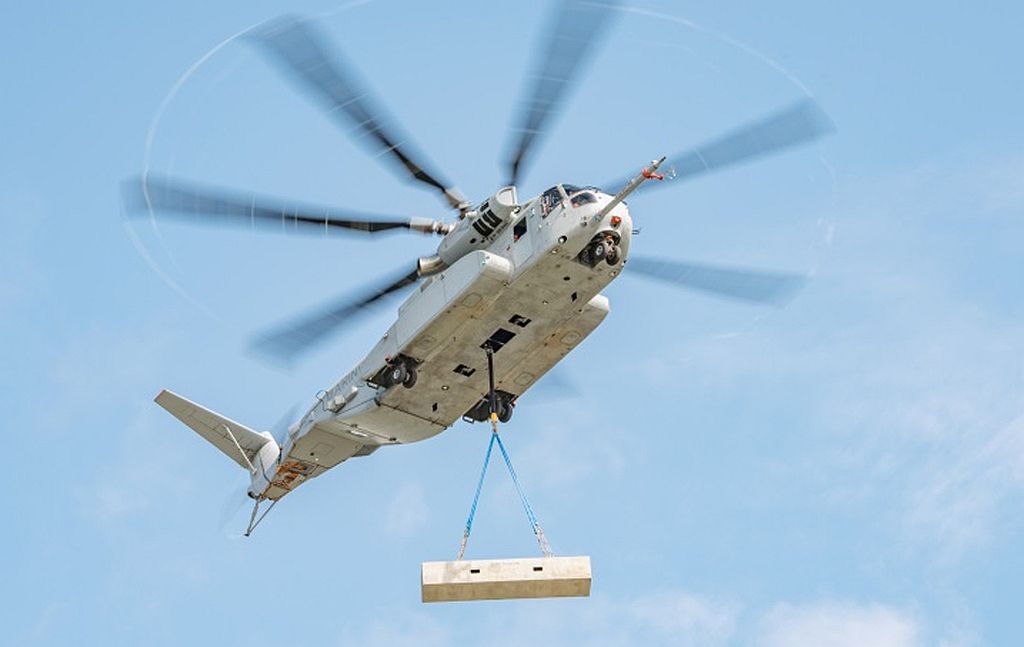
Post a reply
- Go to Previous topic
- Go to Next topic
- Go to Welcome
- Go to Introduce Yourself
- Go to General Discussion
- Go to Screenshots, Images and Videos
- Go to Off topic
- Go to Works in Progress
- Go to Skinning Tips / Tutorials
- Go to Skin Requests
- Go to IJAAF Library
- Go to Luftwaffe Library
- Go to RAF Library
- Go to USAAF / USN Library
- Go to Misc Library
- Go to The Ops Room
- Go to Made in Germany
- Go to Campaigns and Missions
- Go to Works in Progress
- Go to Juri's Air-Raid Shelter
- Go to Campaigns and Missions
- Go to Works in Progress
- Go to Skinpacks
- Go to External Projects Discussion
- Go to Books & Resources
